- France – IGY Sete Marina
- France – IGY Vieux-Port de Cannes
- Italy – Cala di Volpe Mooring
- Italy – IGY Portisco Marina
- Italy – Marina Di Porto Cervo
- LONDON – ST. KATHARINE DOCKS
- Spain – IGY Ibiza Marina
- Spain – IGY Malaga Marina
- St. Lucia – Rodney Bay Marina
- St. Maarten – Simpson Bay Marina
- St. Maarten – Yacht Club Isle De Sol
- St. Thomas, USVI – American Yacht Harbor
- St. Thomas, USVI – Yacht Haven Grande
- Turks & Caicos – Blue Haven Marina
- MANHATTAN, NY – NORTH COVE MARINA AT BROOKFIELD PLACE
- Miami, FL – Yacht Haven Grande at Island Gardens
- St. Petersburg, FL – Maximo Marina
- Colombia – Marina Santa Marta
- Costa Rica – Marina Bahia Golfito
- Mexico – Marina Cabo San Lucas
- Panama – Red Frog Beach Marina

YACHT MANAGEMENT
- France – IGY Vieux-Port de Cannes
- Italy - Cala di Volpe Mooring
- Italy – Marina Di Porto Cervo
- LONDON – ST. KATHARINE DOCKS
- Spain – IGY Ibiza Marina
- Turks & Caicos – Blue Haven Marina
- MANHATTAN, NY – NORTH COVE MARINA AT BROOKFIELD PLACE
- Portland, ME – Fore Points Marina
- United States Yacht Haven Grande Miami at Island Gardens North Cove Marina at Brookfield Place Yacht Haven Grande USVI American Yacht Harbor Maximo Marina IGY Savannah Harbor Marina VIEW ALL MARINAS
- Carribean Blue Haven Marina Yacht Haven Grande USVI Rodney Bay Marina Yacht Club Isle De Sol Simpson Bay Marina American Yacht Harbor Red Frog Beach Island Marina Marina Santa Marta VIEW ALL MARINAS
- Latin America Marina Bahia Golfito Red Frog Beach Island Marina Marina Cabo San Lucas Marina Santa Marta VIEW ALL MARINAS
- Europe IGY Vieux-Port de Cannes Cala di Volpe Mooring IGY Portisco Marina Marina Di Porto Cervo IGY Sete Marina IGY Malaga Marina St. Katharine Docks IGY Ibiza Marina VIEW ALL MARINAS

- Superyacht Miami Yacht Have Grande Miami Miami International Boat Show | Feb 15 – 19 VISIT EVENTS PAGE

- Safety & Security
- Crew Administration
- Financial Administration
- Technical Support
- Documentation
Caribbean Charter Yacht Show --> Berth Reservations IGY Trident
EXPLORE IGY MARINAS

IGY TRIDENT
Simplify superyacht ownership.
igy highlights
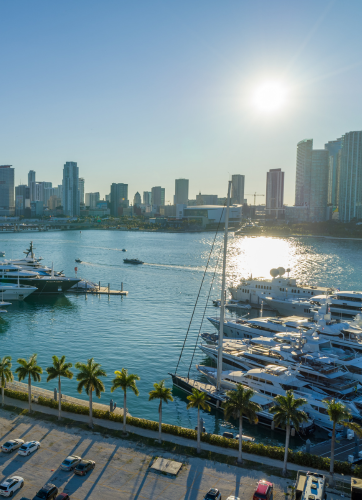
EXPERTISE & HISTORY
ABOUT IGY MARINAS
Marinas worldwide, annual vessel customers, restaurants and shops.
From breakfast at the quayside, all the way to dinner on a rooftop terrace, menus range from fresh fish or pizza to traditional Sardinian cuisine that are also available for takeout or delivery onboard. The supermarket, conveniently located on the dock, specialty shop and liquor store offer a wide selection that are available for delivery to your vessel.
BWA YACHTING
BWA Yachting is a worldwide yacht agency and yachting services provider formed to support captains, managers and crew, making their lives easier, assisting with the increasing demands of managing a modern superyacht. Our global office network stretches throughout the Mediterranean, Northern Europe, the Caribbean and the Americas, providing a unique and seamless experience, wherever our clients are cruising. The BWA Yachting service can be anything from planning a complete trip, saving you time and a lot of hassle, with just one point of reference to the handling of a single port call or last minute concierge request. That’s everything from clearance procedures to berthing reservations, bunkering, provisioning, fiscal advice, logistics, technical assistance, travel arrangements, and more.
www.bwayachting.com Tel.+377 93 500 277 [email protected]
BOOK A SERVICE
Host your event in harbor360, download brochure, contact us today, coming soon, this part of our website is still under maintenance and will be available soon , find cruise lines.
Norwegian Cruise Lines Cruises: Norwegian Cruise Line Cruise Deals | NCL Cruises
MSC MSC Cruises Official Global Website – Select your Country
Celebrity Cruises Cruises: Award-Winning Luxury Cruise Line | Celebrity Cruises
Virgin Voyages Caribbean & European Cruise Vacations | Virgin Voyages
TUI Marella Cruises | Cruise Holidays 2023 / 2024 | TUI.co.uk
RCCL Cruises – Amazing Cruises and Cruise Deals | Royal Caribbean Cruises
Star Clipper Star Clippers UK – Home
FIND FERRIES
TRANS COTE D’AZUR 04 92 98 71 30 https://www.trans-cote-azur.com/
RIVIERA LINES 04 92 98 71 31 https://www.riviera-lines.com/
HORIZON 04 92 98 71 36 https://www.horizon-lerins.com/
PLANARIA 04 92 98 71 38 https://www.city-life.fr/
More Information Coming Soon!
General inquiries, need assistance.
- October to April : Monday- Friday 8:00AM to 6:00PM Weekends & Bank Holidays: 8:30AM to 12:30PM and 1:30PM to 5:00PM May and September: 8:00AM to 7:00PM June to August: 8:00AM to 8:00PM

MarineMax to acquire IGY Marinas

MarineMax , Inc. today announced that it has entered into a definitive agreement to acquire Island Global Yachting LLC ( IGY Marinas ), which owns and operates a collection of marina assets and a yacht management platform in key global yachting destinations.
MarineMax will acquire IGY Marinas for $480 million in cash, with an additional potential earnout of up to $100 million two years after closing, subject to the achievement of defined performance metrics. IGY Marinas, through recent acquisitions and organic growth, is projected to generate over $100 million of revenue in calendar 2022.
Subject to the satisfaction of customary closing conditions, MarineMax expects the acquisition to close in the first half of fiscal 2023 and to be accretive within the first twelve months of closing. IGY Marinas will maintain its luxury branding that is well recognized as best-in-class in the global marina and superyacht communities. Tom Mukamal, CEO of IGY Marinas, and the IGY Marinas existing management team will continue to lead the growth and operations of the business.
IGY Marinas offers a global network of 23 curated marinas in the Americas, the Caribbean, and Europe, delivering year-round customer touchpoints. IGY Marinas caters to a wide variety of luxury yachts, while also being exclusive home ports for some of the world’s largest megayachts. The network of marinas is further bolstered by its exclusive Trident superyacht membership program, expansive service offerings, and comprehensive yacht management platform. In addition, IGY Marinas is a venue for exclusive events such as the Cannes Yachting Festival, Cannes Lions International Festival of Creativity, Superyacht Miami, and Art Basel. IGY Marinas is unique in that its scale and strategic geographic footprint enables it to provide vertically integrated services to superyacht customers as they travel to popular destinations.
“We are delighted to announce our acquisition of IGY Marinas, a transformative transaction for MarineMax, that significantly strengthens our ability to provide the best customer experience to yacht owners around the world,” said W. Brett McGill, Chief Executive Officer and President of MarineMax . “The addition of IGY Marinas positions MarineMax as the preeminent leader in the superyacht industry—the only company able to offer an integrated experience coupling high value superyacht berthing and marina services in premier locations with exclusive superyacht service offerings. Moreover, this investment continues to diversify our business mix with not only higher margins, but also a larger geographic footprint, especially in highly desired destinations in the Mediterranean and the Caribbean.”
McGill continued, “We are very pleased to strategically expand with IGY Marinas and have tremendous respect for their outstanding management team for building a high-quality real estate portfolio of luxury marinas with extraordinary growth potential. IGY has experienced significant recent growth, as its brand has become sought-after by yacht owners, as well as public and private marina owners worldwide. This investment aligns with our ongoing strategic acquisition plan, including our superyacht business, to selectively expand our service offerings with acquisitions of high growth, high margin businesses. Furthermore, we strongly believe that IGY Marinas will offer our Fraser Yachts and Northrop & Johnson current and future superyacht customers the opportunity to enhance their yachting experiences by providing them access to the world’s only superyacht marina network.”
“We are excited to join the MarineMax Family and its experienced management team,” said Tom Mukamal, CEO of IGY Marinas . “MarineMax brings significant resources, synergies, and competitive advantages to our business amplifying our potential for both organic and inorganic growth. With IGY’s irreplaceable destination portfolio, demonstrated track record of successful acquisitions and a robust pipeline, we are confident in our collective ability to strengthen and build on our position as the global leader in superyacht and luxury marina destinations and related services.”
As stated above, MarineMax expects the transaction to close in the first half of fiscal 2023, subject to the satisfaction of customary closing conditions. The transaction will be financed through MarineMax’s recently completed expansion of its credit facilities and cash on hand.
Share this:
- Click to share on Facebook (Opens in new window)
- Click to share on Twitter (Opens in new window)
- Click to share on LinkedIn (Opens in new window)
- Click to share on Reddit (Opens in new window)
- Click to share on Tumblr (Opens in new window)
Related Articles

Forza X1 names interim CEO, president

RBFF awards 2024 R3 program grants

Hatteras names manager to lead New Bern plant operations

NMMA presents at California Boating Congress
Leave a reply cancel reply.
Your email address will not be published. Required fields are marked *
Save my name, email, and website in this browser for the next time I comment.


By SuperyachtNews 09 Aug 2022
MarineMax to acquire IGY Marinas for $480 million in cash
Marinemax expects the transaction to close in the first half of fiscal 2023, subject to the satisfaction of customary closing conditions….
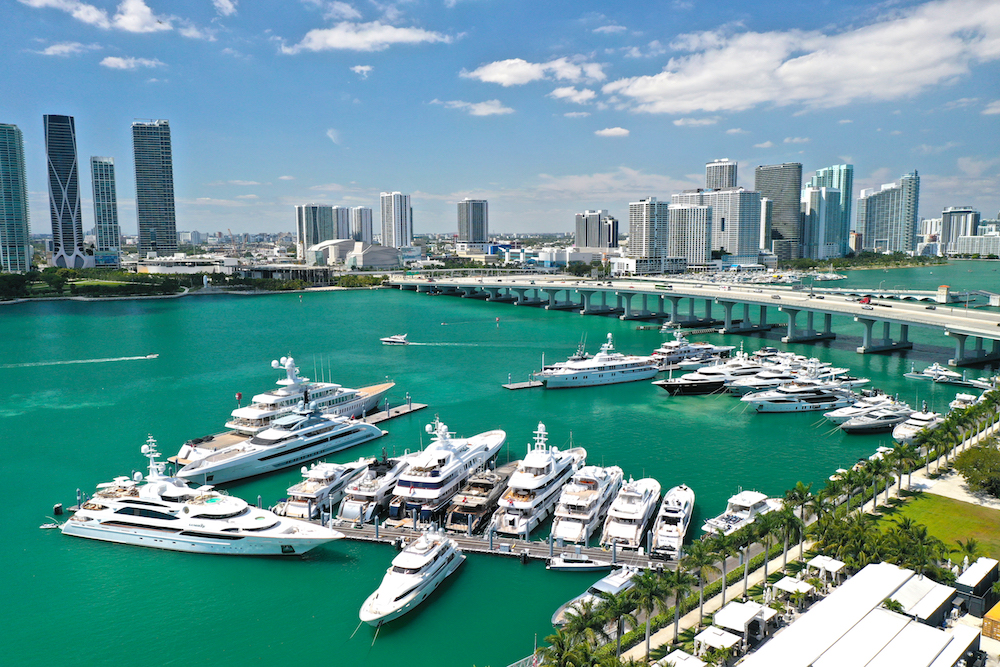
MarineMax , the world’s largest recreational boat and yacht retailer, has announced that it has entered into a definitive agreement to acquire Island Global Yachting LLC (“ IGY Marinas ”), which owns and operates a collection of iconic marina assets and a yacht management platform in key global yachting destinations.
MarineMax will acquire IGY Marinas for $480 million in cash, with an additional potential earnout of up to $100 million two years after closing, subject to the achievement of defined performance metrics. IGY Marinas, through recent acquisitions and organic growth, is projected to generate over $100 million of revenue in 2022. Subject to the satisfaction of customary closing conditions, MarineMax expects the acquisition to close in the first half of fiscal 2023 and to be accretive within the first twelve months of closing.
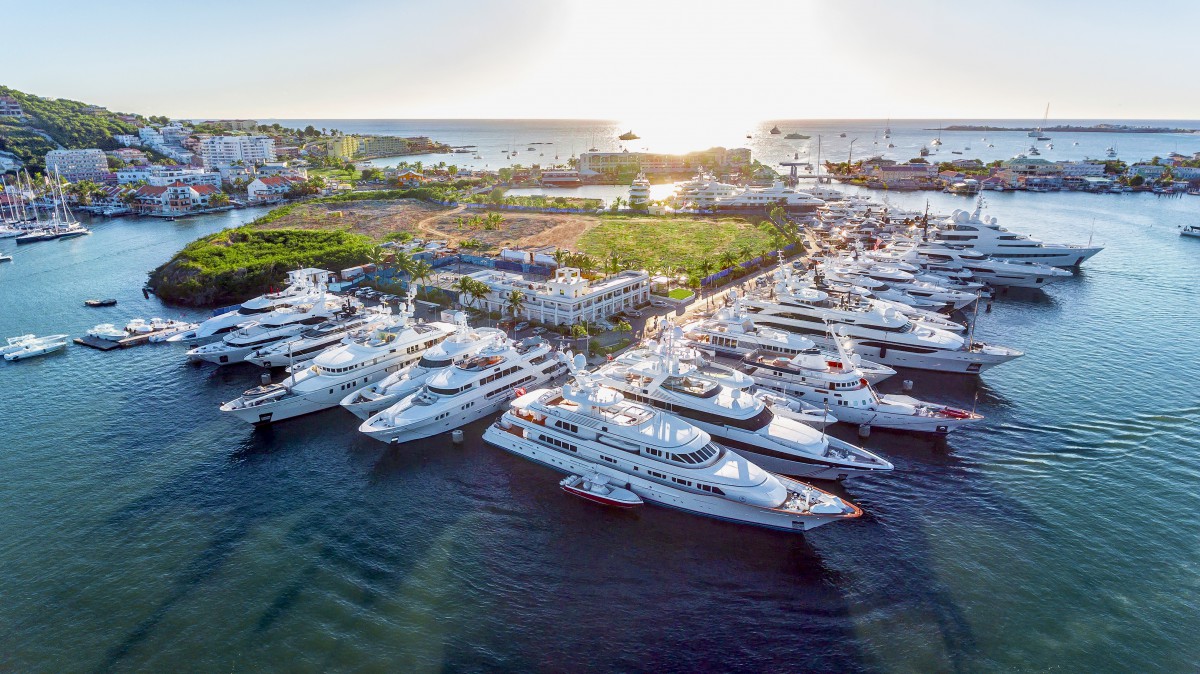
IGY Marinas will maintain its luxury branding that is well recognized as best-in-class in the global marina and superyacht communities. Tom Mukamal, CEO of IGY Marinas, and the IGY Marinas existing management team will continue to lead the growth and operations of the business.
IGY Marinas offers a global network of 23 curated marinas in the Americas, the Caribbean, and Europe, delivering year-round customer touchpoints. The network of marinas is further bolstered by its exclusive Trident superyacht membership program, expansive service offerings, and comprehensive yacht management platform. IGY Marinas is also the venue for exclusive events such as the Cannes Yachting Festival.
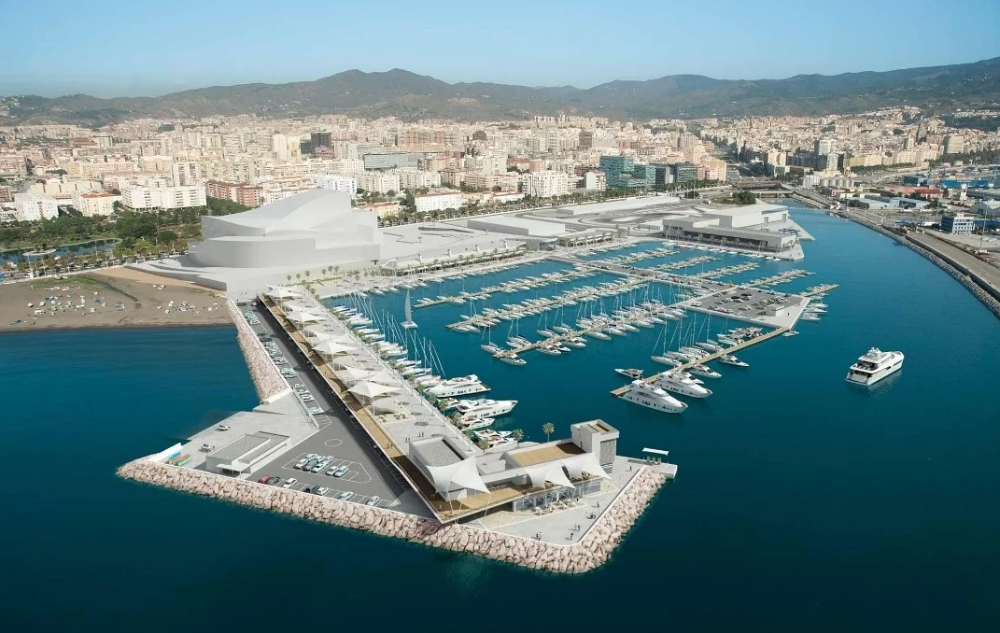
“We are delighted to announce our acquisition of IGY Marinas, a transformative transaction for MarineMax, that significantly strengthens our ability to provide the best customer experience to yacht owners around the world,” said W. Brett McGill, Chief Executive Officer and President of MarineMax. “The addition of IGY Marinas positions MarineMax as the preeminent leader in the superyacht industry—the only company able to offer an integrated experience coupling high-value superyacht berthing and marina services in premier locations with exclusive superyacht service offerings. Moreover, this investment continues to diversify our business mix with not only higher margins but also a larger geographic footprint, especially in highly desired destinations in the Mediterranean and the Caribbean.”
McGill continued, “We are very pleased to strategically expand with IGY Marinas and have tremendous respect for their outstanding management team for building a high-quality real estate portfolio of luxury marinas with extraordinary growth potential. IGY has experienced significant recent growth, as its brand has become sought-after by yacht owners, as well as public and private marina owners worldwide. This investment aligns with our ongoing strategic acquisition plan, including our superyacht business, to selectively expand our service offerings with acquisitions of high-growth, high-margin businesses. Furthermore, we strongly believe that IGY Marinas will offer our Fraser Yachts and Northrop & Johnson current and future superyacht customers the opportunity to enhance their yachting experiences by providing them access to the world’s only superyacht marina network.”
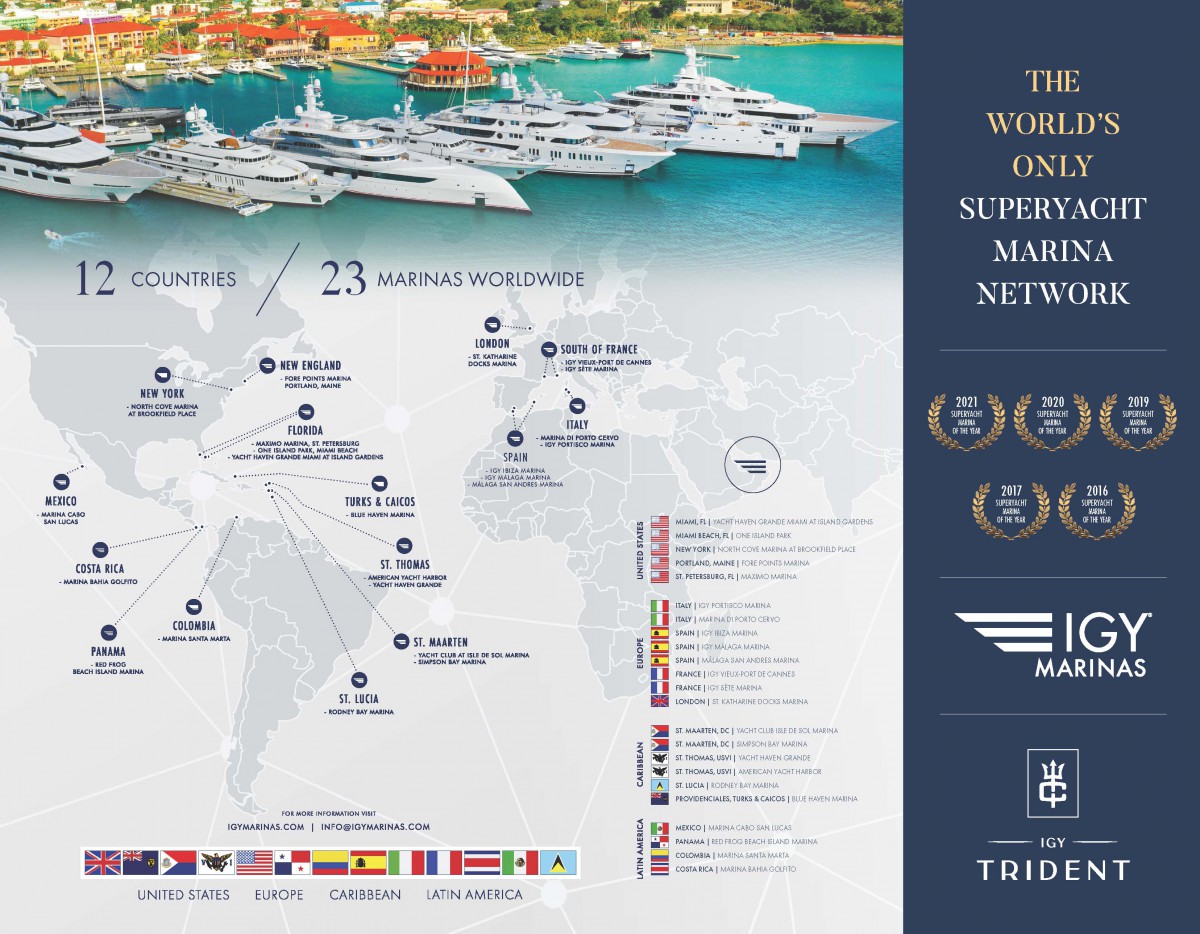
“We are excited to join the MarineMax Family and its experienced management team,” said Tom Mukamal, CEO of IGY Marinas. “MarineMax brings significant resources, synergies, and competitive advantages to our business amplifying our potential for both organic and inorganic growth. With IGY’s irreplaceable destination portfolio, demonstrated track record of successful acquisitions and a robust pipeline, we are confident in our collective ability to strengthen and build on our position as the global leader in superyacht and luxury marina destinations and related services.”
As stated above, MarineMax expects the transaction to close in the first half of fiscal 2023, subject to the satisfaction of customary closing conditions. The transaction will be financed through MarineMax’s recently completed expansion of its credit facilities and cash on hand. Raymond James represented MarineMax, while Moelis & Company LLC represented IGY Marinas.
Profile links
Island Global Yachting (IGY)
Join the discussion
To post comments please Sign in or Register
When commenting please follow our house rules
Click here to become part of The Superyacht Group community, and join us in our mission to make this industry accessible to all, and prosperous for the long-term. We are offering access to the superyacht industry’s most comprehensive and longstanding archive of business-critical information, as well as a comprehensive, real-time superyacht fleet database, for just £10 per month, because we are One Industry with One Mission. Sign up here .
Related news

D-Marin acquires Punta Faro Marina
D-Marin continues to expand its Mediterranean network, with Punta Faro Marina its first in Italy
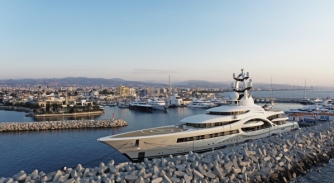
Limassol Marina brace for ‘unprecedented’ summer season
Limassol Marina outline the next step in their evolution as they brace for a busy yacht season in the Eastern Med

Saudi Arabia to build luxury yacht club
The ultra-luxury yacht club will be built on the Red Sea as part of the Vision 2030 project
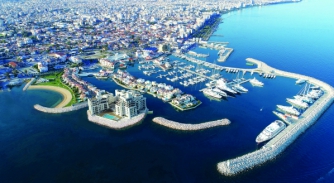
The eastern yachting hub
Limassol Marina and Cyprus have quietly become the perfect year-round destination.
2 years ago
Sign up to the SuperyachtNews Bulletin
Receive unrivalled market intelligence, weekly headlines and the most relevant and insightful journalism directly to your inbox.
Sign up to the SuperyachtNews Bulletin
The superyachtnews app.

Follow us on
Media Pack Request
Please select exactly what you would like to receive from us by ticking the boxes below:
SuperyachtNews.com
Register to comment

MarineMax Set to Acquire Island Global Yachting

MarineMax, Inc. announced that it has entered into a definitive agreement to acquire Island Global Yachting LLC (“IGY Marinas”), which owns and operates a collection of iconic marina assets and a yacht management platform in key global yachting destinations. MarineMax will acquire IGY Marinas for $480 million in cash, with an additional potential earnout of up to $100 million two years after closing, subject to the achievement of defined performance metrics. IGY Marinas, through recent acquisitions and organic growth, is projected to generate over $100 million of revenue in calendar 2022. Subject to the satisfaction of customary closing conditions, MarineMax expects the acquisition to close in the first half of fiscal 2023 and to be accretive within the first 12 months of closing.
IGY Marinas will maintain its luxury branding that is well recognized in the global marina and superyacht communities. Tom Mukamal, CEO of IGY Marinas, and the IGY Marinas existing management team will continue to lead the growth and operations of the business. IGY Marinas offers a global network of 23 curated marinas in the Americas, the Caribbean, and Europe, delivering year-round customer touchpoints. IGY Marinas caters to a wide variety of luxury yachts, while also being exclusive home ports for some of the world’s largest megayachts. The network of marinas is further bolstered by its exclusive Trident superyacht membership program, expansive service offerings, and comprehensive yacht management platform.
In addition, IGY Marinas is a venue for exclusive events such as the Cannes Yachting Festival, Cannes Lions International Festival of Creativity, Superyacht Miami, and Art Basel. IGY Marinas is unique in that its scale and strategic geographic footprint enables it to provide vertically integrated services to superyacht customers as they travel to popular destinations.
As stated above, MarineMax expects the transaction to close in the first half of fiscal 2023, subject to the satisfaction of customary closing conditions. The transaction will be financed through MarineMax’s recently completed expansion of its credit facilities and cash on hand. Raymond James represented MarineMax, while Moelis & Company LLC represented IGY Marinas.
GLOBAL YACHT AND BOAT RETAILER MARINEMAX INC TO ACQUIRE IGY MARINAS FOR A DEAL NEARING $500 MILLION
By Kamal Haynes

The world’s largest recreational boat and yacht retailer MarineMax, Inc. will be acquiring Island Global Yachting LLC, which is widely known as IGY Marinas, for an estimated total nearing approximately $500 million.
This was confirmed by global public relations company Business Wire which said that MarineMax, Inc. made the announcement on Tuesday, August 9, regarding the acquisition.
According to the release, the acquisition is set to be completed within the fiscal year of 2023.
“MarineMax will acquire IGY Marinas for $480 million in cash, with an additional potential earn out of up to $100 million two years after closing, subject to the achievement of defined performance metrics. IGY Marinas, through recent acquisitions and organic growth, is projected to generate over $100 million of revenue in calendar 2022”, Businesswire stated.
“Subject to the satisfaction of customary closing conditions, MarineMax expects the acquisition to close in the first half of fiscal 2023 and to be accretive within the first twelve months of closing”, the company added.
The release also revealed that IGY Marinas will maintain its luxury branding “that is well recognized as best-in-class in the global marina and superyacht communities” with the existing chief executive officer (CEO) and management team which will remain on board to lead the operations of the business.
IGY Marinas CEO Tom Mukamal expressed that he was excited to join the MarineMax Family.
“MarineMax brings significant resources, synergies, and competitive advantages to our business, amplifying our potential for both organic and inorganic growth. With IGY’s irreplaceable destination portfolio, demonstrated track record of successful acquisitions and a robust pipeline, we are confident in our collective ability to strengthen and build on our position as the global leader in superyacht and luxury marina destinations and related services,” Mukamal stated.
Meanwhile, Chief Executive Officer and President of MarineMax W. Brett McGill said he was delighted to announce the acquisition, labelling it “a transformative transaction” for the company.
He said, “The addition of IGY Marinas positions MarineMax as the preeminent leader in the superyacht industry—the only company able to offer an integrated experience coupling high value superyacht berthing and marina services in premier locations with exclusive superyacht service offerings.”
“Moreover, this investment continues to diversify our business mix with not only higher margins, but also a larger geographic footprint, especially in highly desired destinations in the Mediterranean and the Caribbean”, McGill added.
IGY Marinas owns and operates a collection of 23 iconic marina assets and a yacht management platform in key global yachting destinations, including St. Lucia, St. Maarten, the United States Virgin Islands (St. Thomas), and Turks and Caicos in the Caribbean.

- CLASSIFIEDS
- NEWSLETTERS
- SUBMIT NEWS

MarineMax to acquire IGY Marinas significantly expanding global marina and services business
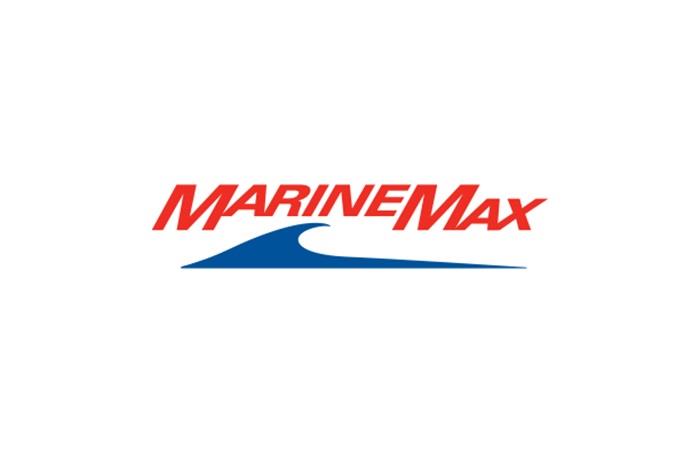
Related Articles
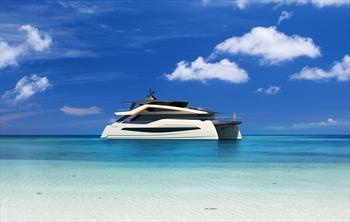

Los Angeles
- San Francisco
- Washington DC

Cover Story
Hear eva longoria roar during women’s history month as she leads her tequila brand to victory.

Gordon Ramsay Is Turning Up The Heat In Miami With The Opening Of Lucky Cat

Romero Britto On Transcending The World Of Fine Art to Expand His Massive Empire

Mario Carbone Is Planning A Major NYC Domination With The Opening Of ZZ’s Club New York

Katie Couric’s Advocation For Cancer Screening Paid Off — And May Have Saved Her Life
Marinemax announces acquisition of igy marinas in a $480m deal.
Haute Yachts , News
by Isabella Harrison
The MarineMax team is excited about this recent business development that will help expand their high-margin businesses. Brett McGill, Chief Executive Officer and President of MarineMax, explains, “The addition of IGY Marinas positions MarineMax as the preeminent leader in the superyacht industry—the only company able to offer an integrated experience coupling high-value superyacht berthing and marina services in premier locations with exclusive superyacht service offerings. Moreover, this investment continues to diversify our business mix with not only higher margins but also a larger geographic footprint, especially in highly desired destinations in the Mediterranean and the Caribbean.”
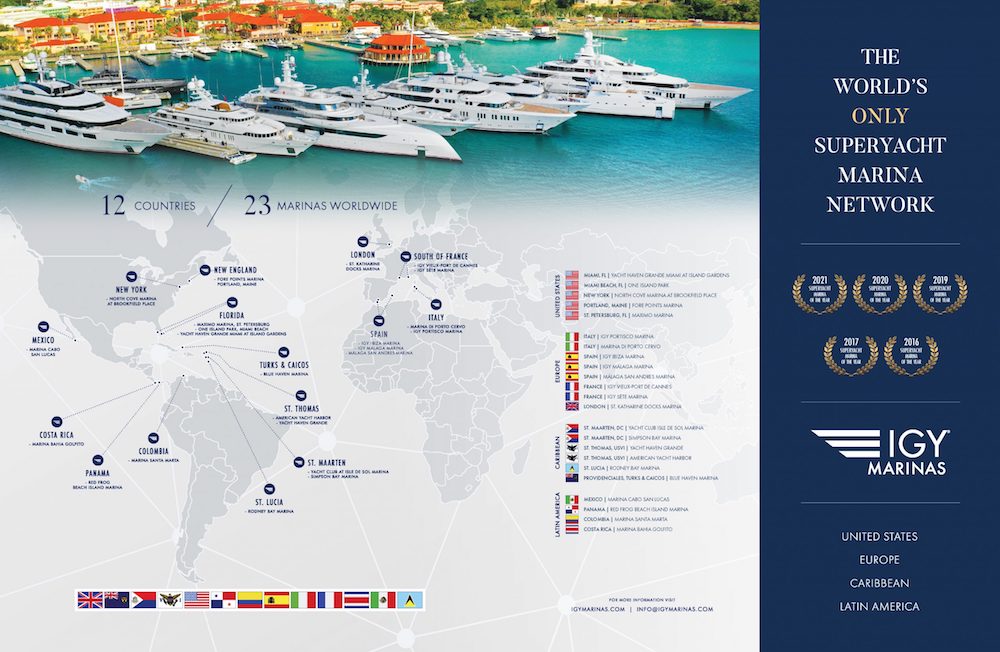
IGY’s CEO Tom Mukamal appears to be equally excited to join MarineMax as he explains that the merger will lead to increased resources and competitive advantages for the company. Island Global Yachting isn’t the only one benefiting from this acquisition. Considering they are on track to make over $100 million this calendar year, IGY more than doubles MarineMax’s recurring resilient marina revenue. Aside from bringing over a new customer base, IGY has strong brand recognition and a global presence that will benefit both retailers on their path to new growth. Mukamal adds, “With IGY’s irreplaceable destination portfolio, demonstrated track record of successful acquisitions, and a robust pipeline, we are confident in our ability to strengthen and build on our position as the global leader in superyacht and luxury marina destinations and related services.”
MarineMax is continuing its global expansion across more prestigious marinas like North Cove Marina at Brookfield Place and Marina Cabo San Lucas. As the demand for charters and superyachts continues to increase, it appears that MarineMax will have endless opportunities for growth.

The Finer Things: The Best New High Jewelry Of 2022

Entrepreneur
Market america worldwide | shop.com celebrates 30 years at #maic2022, ' . get_the_title() . ' ' ); >, related articles.
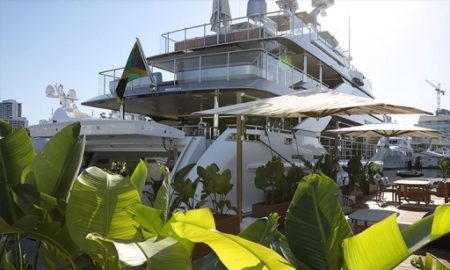
Haute Partners
42 years of luxury boating: the 2024 palm beach.
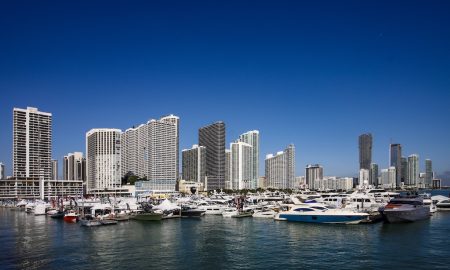
Haute Yachts
2023 discover boating miami international boat show.
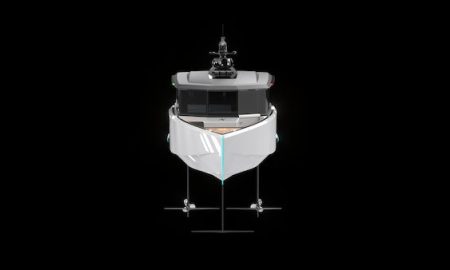
Navier Will Hold Exclusive Pre-Reveal Event With Haute

Haute Wine + Spirits
The ultimate fantasy cruise: all aboard dom pérignon’s, latest news.

Bruno Mars Pinky Promises A Good Time At His New Sin

The Pairing We’ve Been Waiting For: Daniel Humm’s Eleven

Cocktail of the Week
Cocktail of the week: celebrate the miami open with the.

Tommy Paul And The Road To Olympic Glory
You might also like.

Bruno Mars Pinky Promises A Good Time At His New Sin City Nightlife Venue, The Pinky Ring


The Pairing We’ve Been Waiting For: Daniel Humm’s Eleven Madison Park Is Taking Over Jean-Georges’ Matador Bar For One Night Only

Cocktail Of The Week: Celebrate The Miami Open With The Courtside Cooler

Cult Gaia Has Officially Opened In The Miami Design District — Here’s Everything You Need To Know
Inside this issue.

STAY CONNECTED

DISCOVER THE BEST KEPT SECRETS IN YOUR CITY

* All fields are mandatory
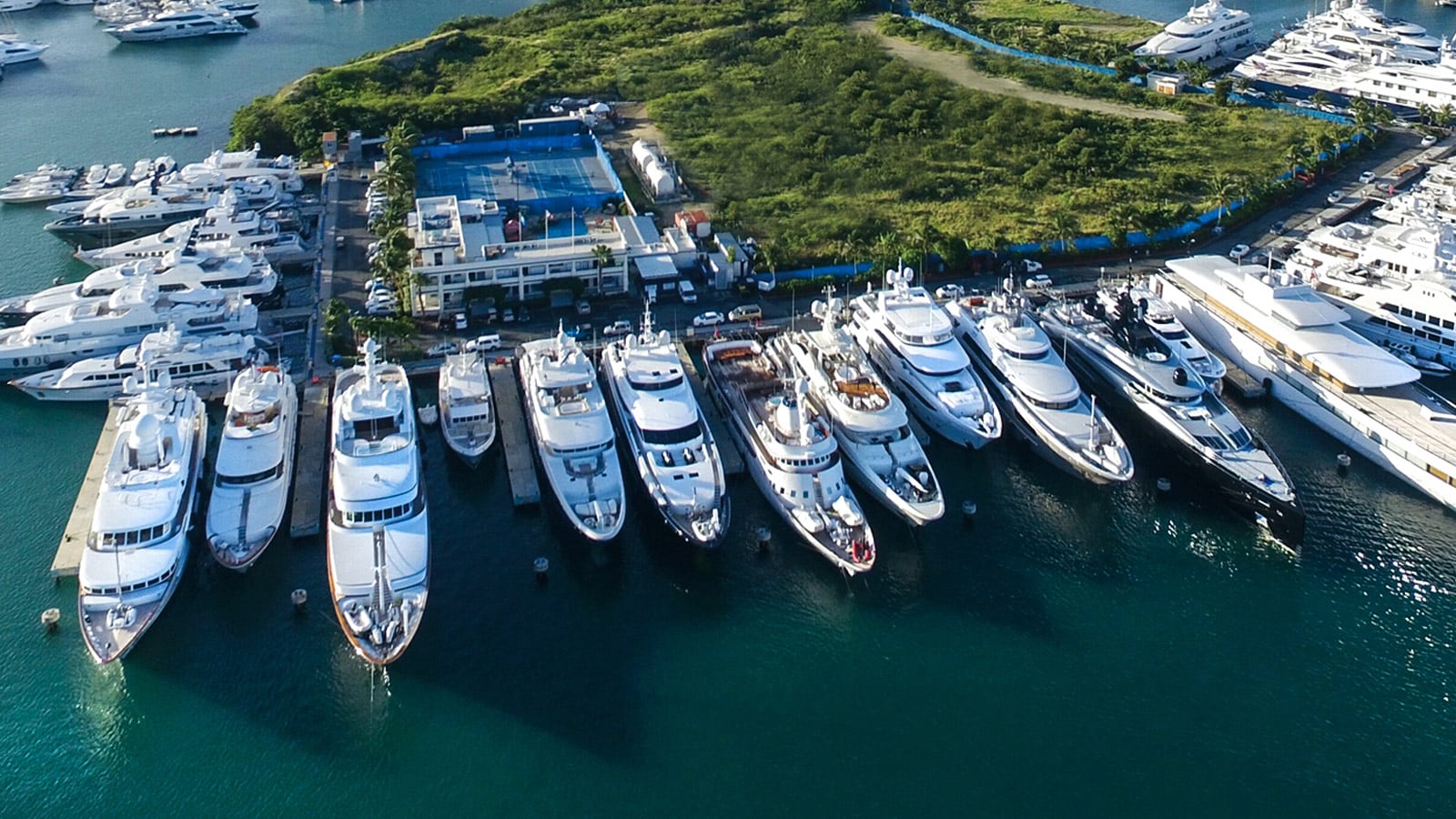
MarineMax to acquire IGY Marinas for further expansion

MarineMax , the world’s largest recreational boat and yacht retailer, has announced that it has entered into a definitive agreement to acquire, by the first half of 2023, Island Global Yachting LLC (“IGY Marinas”), which owns and operates a collection of iconic marina assets and a yacht management platform in key global yachting destinations. MarineMax will acquire IGY Marinas for USD 480 million. The new owner expects IGY Marinas to generate over $100m in revenue in 2022/2023 as a result of the acquisition and growth targets. IGY Marinas will maintain its luxury branding that is well recognized as best-in-class in the global marina and superyacht communities. Tom Mukamal, CEO of IGY Marinas, and the IGY Marinas existing management team will continue to lead the growth and operations of the business.
IGY Marinas distinguishes itself with a synergistic network of strategically positioned luxury marinas situated in the world’s most iconic and coveted yachting and sport fishing destinations. IGY Marinas has pioneered best-in-class standards for service and quality in nautical tourism around the world. It offers a global network of 23 curated marinas in the Americas, the Caribbean, and Europe, delivering year-round customer touchpoints. IGY Marinas caters to a wide variety of luxury yachts, while also being exclusive home ports for some of the world’s largest superyachts. Moreover, IGY Marinas is a venue for exclusive events such as the Cannes Yachting Festival, Cannes Lions International Festival of Creativity, Superyacht Miami, and Art Basel.

“ Our acquisition of IGY Marinas is a transformative transaction for MarineMax, that significantly strengthens our ability to provide the best customer experience to yacht owners around the world,” said W. Brett McGill , CEO and President of MarineMax. “The addition of IGY Marinas positions MarineMax as the preeminent leader in the superyacht industry—the only company able to offer an integrated experience coupling high value superyacht berthing and marina services in premier locations with exclusive superyacht service offerings. Moreover, this investment continues to diversify our business mix with not only higher margins, but also a larger geographic footprint, especially in highly desired destinations in the Mediterranean and the Caribbean.”
Mr. McGill continued, “We are very pleased to strategically expand with IGY Marinas and have tremendous respect for their outstanding management team for building a high-quality real estate portfolio of luxury marinas with extraordinary growth potential. IGY has experienced significant recent growth, as its brand has become sought-after by yacht owners, as well as public and private marina owners worldwide. This investment aligns with our ongoing strategic acquisition plan, including our superyacht business, to selectively expand our service offerings with acquisitions of high growth, high margin businesses. Furthermore, we strongly believe that IGY Marinas will offer our Fraser Yachts and Northrop & Johnson current and future superyacht customers the opportunity to enhance their yachting experiences by providing them access to the world’s only superyacht marina network.”
“We are excited to join the MarineMax Family and its experienced management team,” said Tom Mukamal, CEO of IGY Marinas. “MarineMax brings significant resources, synergies, and competitive advantages to our business amplifying our potential for both organic and inorganic growth. We are confident in our collective ability to strengthen and build on our position as the global leader in superyacht and luxury marina destinations and related services.”
Leave a Reply Cancel reply
Your email address will not be published.
Save my name, email, and website in this browser for the next time I comment.
You might be interested in
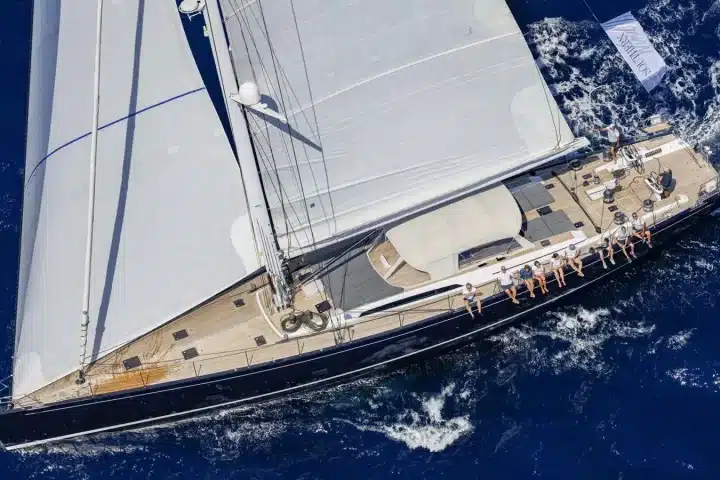
CAPE ARROW is for sale: price and where to see her
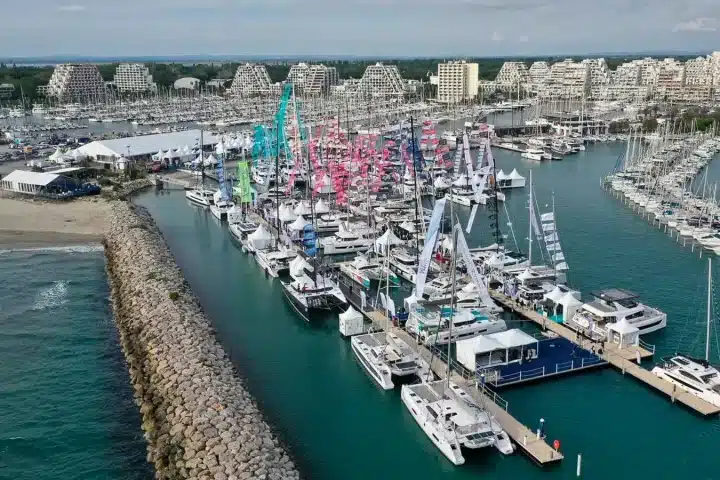
International Multihull Show 2024: big multihulls take center stage in La Grande Motte

Boat Engine Maintenance: complete guide and useful tips for DIY

Guidi exhaust valves and seacocks: seven years of testing, here are the results.
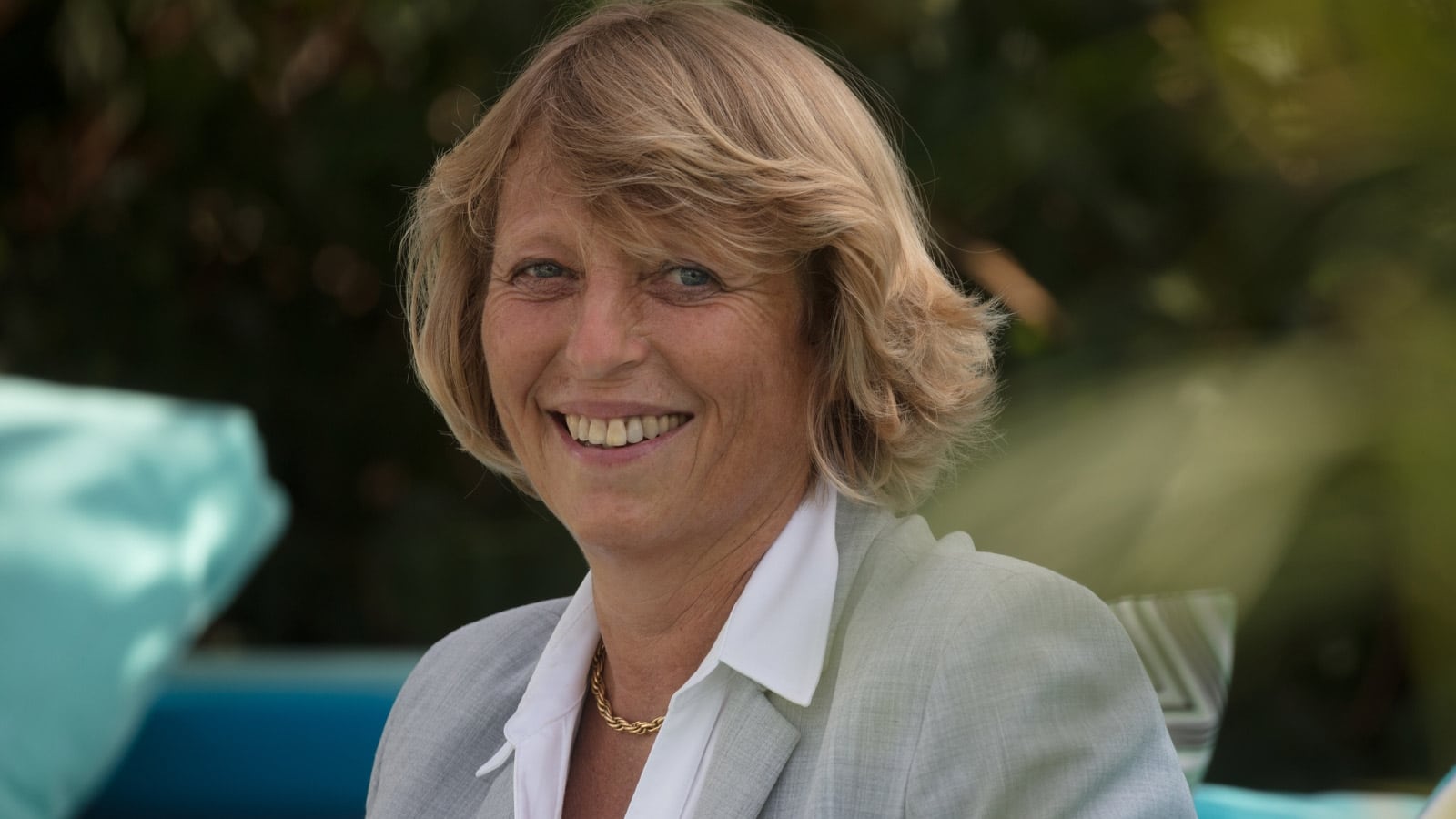
Sylvie Ernoult and the Cannes Yachting Festival: a success story
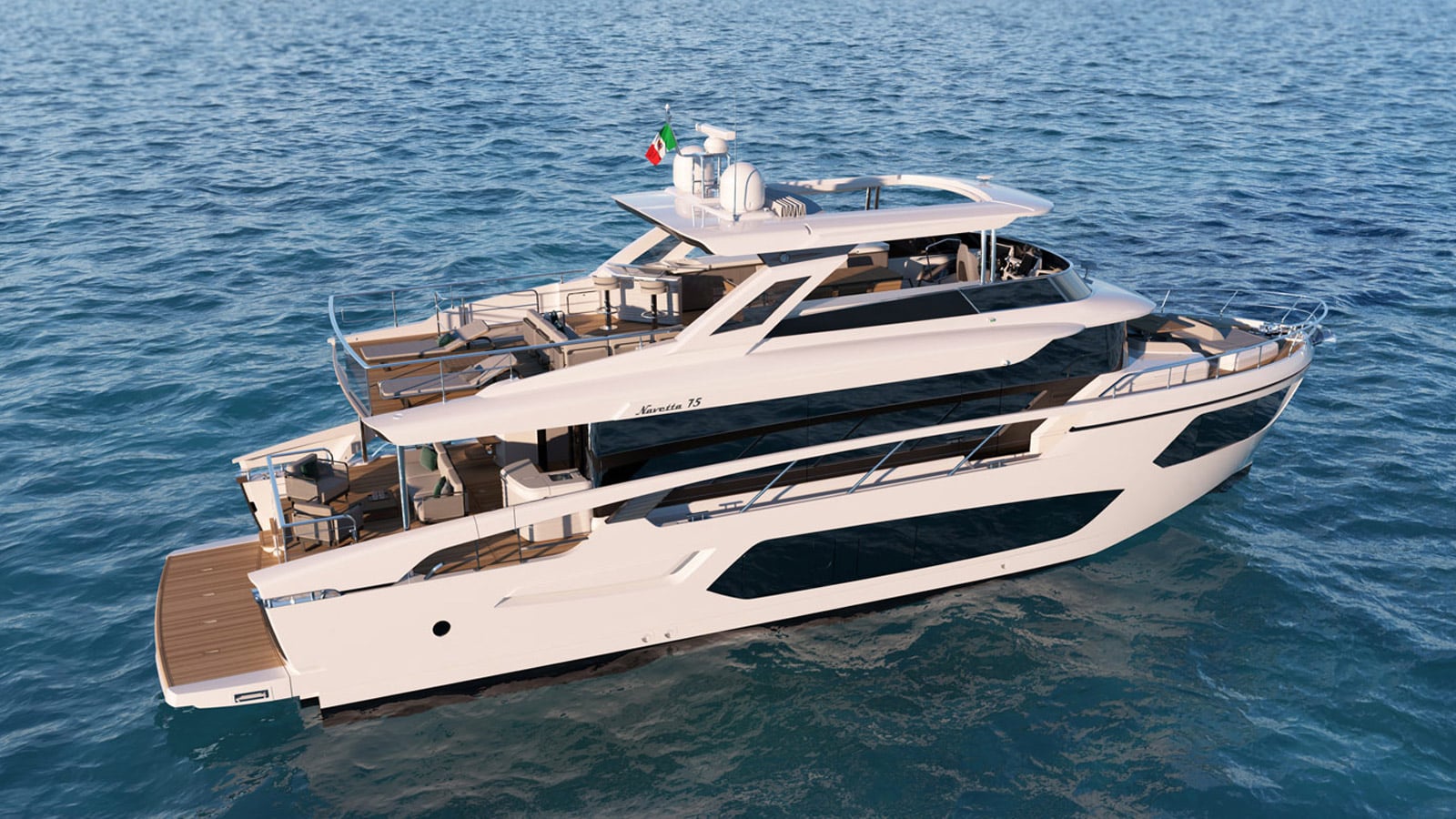
Absolute Yachts to debut its Navetta 75 at Cannes

To provide the best experiences, we and our partners use technologies like cookies to store and/or access device information. Consenting to these technologies will allow us and our partners to process personal data such as browsing behavior or unique IDs on this site and show (non-) personalized ads. Not consenting or withdrawing consent, may adversely affect certain features and functions.
Click below to consent to the above or make granular choices. Your choices will be applied to this site only. You can change your settings at any time, including withdrawing your consent, by using the toggles on the Cookie Policy, or by clicking on the manage consent button at the bottom of the screen.
Subscribe For Latest Updates
Sign up to receive the best of Yachting News, sea trials, boat review and world premieres .
The only ADVERTISING FREE newsletter

IGY Transforms Superyacht Ownership via IGY Trident
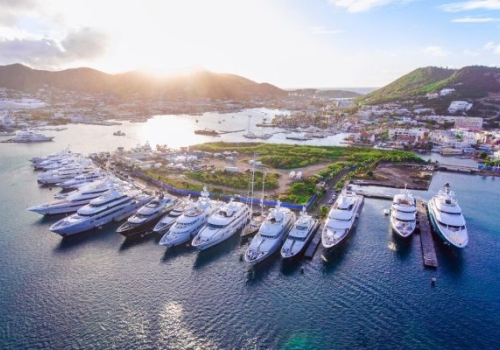
Island Global Yachting LLC (“IGY”), the only global network of premium yachting destinations and yacht management services, is launching its IGY Trident Collective, the first-ever global collective of superyacht owners. This highly exclusive, by invitation only private membership program is only available to a limited number of superyacht owners – simplifying and enhancing superyacht ownership via specialized, next-generation benefits.
In collaboration with best-in-class partners, benefits include guaranteed global dockage, fuel bunkering, proprietary hull insurance, yacht management, crew service training, yacht agency services, captain and crew benefits, comprehensive health and wellness solutions, and access to curated lifestyle events and experiences.
“Our goal is to improve the economics and experience of yachting, building on our world-class destination base and yacht management platform,” says IGY Trident CEO Tom Mukamal. “People want simplicity in a very difficult and fragmented environment. Between the owner and marina, there are 10-plus different stakeholders. IGY Trident offers a comprehensive set of services administered from a single source.”
IGY’s global portfolio of superyacht-oriented properties extends to 23 marinas in 13 countries across the United States, Caribbean, Europe, and Latin America. In March 2022, IGY took over operations of the Vieux-Port de Cannes, a 700+ slip marina in the heart of the French Riviera. The company is poised to continue expanding into some of the most desirable cruising regions for superyacht owners.
IGY Trident’s Suite of Services
IGY Trident’s suite of services is supported by visionary industry partnerships resulting in a first-in-class ecosystem:
IGY offers IGY Trident members guaranteed dockage access and member pricing on marina services , including dockage and fuel, across IGY’s 23 marina destinations worldwide.
Fairport Yacht Support , IGY’s yacht management platform, provides exclusive IGY Trident member pricing and access to yacht management services , including financial administration, crew management, and technical yacht support.
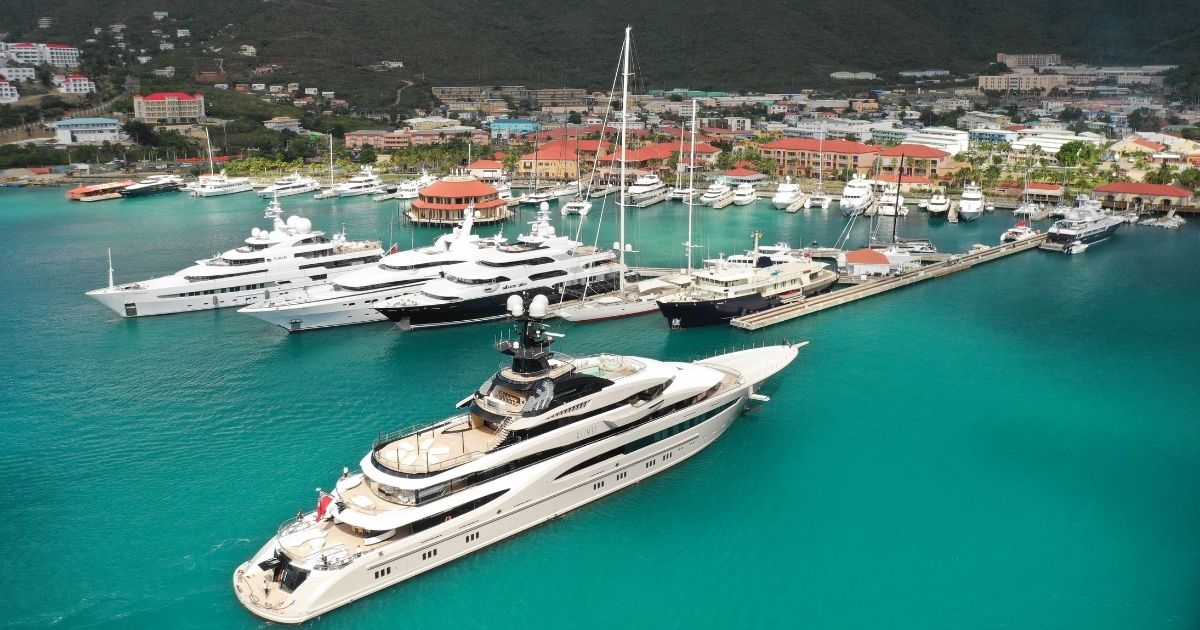
World Fuel Services provides member pricing on global fuel bunkering including in Gibraltar , access to a dedicated 24/7 technical team, transparent member pricing and access to carbon offset credits .
Navium Marine provides exclusive IGY Trident member access to its proprietary hull insurance program . Vessels engaged in the program enjoy coverage terms that meet or exceed their current coverage and participate in a tranche of capacity dedicated to themselves and fellow IGY Trident members only. A profit share, if available, is issued annually across the portfolio.
BWA Yachting offers global yacht agency and concierge services with benefits specifically for IGY Trident members.
Forbes Travel Guide engages directly with the superyacht crew of Trident members, delivering proprietary superyacht crew service training . The best-in-class professional development curriculum is customized for superyacht crews based on the principles of exceptional service that FTG’s highly experienced trainers teach at Five-Star hotels globally.
VIGILINT provides IGY Trident members with a comprehensive health and wellness solution via its industry leading Global MedAssist Program , delivering 24/7, real-time medical consultation, comprehensive care, critical care transport, and access to a Cleveland Clinic specialist.
The IGY Trident Community
IGY Trident intends to host innovative, intimate member events and experiences around the globe, including private concerts and invite-only social gatherings designed for superyacht owners.
“We know from speaking with our superyacht owner clients that they are interested in meeting and attending special events with other like-minded superyacht owners,” Mukamal says. “IGY Trident brings together the first ever community of superyacht owners, opening doors for communication and dealings both inside and outside of yachting.”
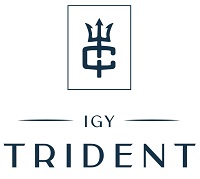
Post your comment
You cannot post comments until you have logged in.
No one has commented on this page yet.
RSS feed for comments on this page | RSS feed for all comments
Search articles with keywords
We couldn’t find any results matching your search.
Please try using other words for your search or explore other sections of the website for relevant information.
We’re sorry, we are currently experiencing some issues, please try again later.
Our team is working diligently to resolve the issue. Thank you for your patience and understanding.
MarineMax To Acquire IGY Marinas Significantly Expanding Global Marina and Services Business
~Largest Superyacht Luxury Marina Network with Iconic Worldwide Locations~
~Will More than Double MarineMax’s Recurring Marina Revenue~
~Increases Global Superyacht Services Capabilities~
~Margin Enhancing Business Further Reduces Business Cyclicality~
~Projected to be Accretive in First Full Year~
CLEARWATER, Fla. --(BUSINESS WIRE)-- MarineMax, Inc. (NYSE: HZO), the world’s largest recreational boat and yacht retailer, today announced that it has entered into a definitive agreement to acquire Island Global Yachting LLC (“IGY Marinas”), which owns and operates a collection of iconic marina assets and a yacht management platform in key global yachting destinations. MarineMax will acquire IGY Marinas for $480 million in cash, with an additional potential earnout of up to $100 million two years after closing, subject to the achievement of defined performance metrics. IGY Marinas, through recent acquisitions and organic growth, is projected to generate over $100 million of revenue in calendar 2022. Subject to the satisfaction of customary closing conditions, MarineMax expects the acquisition to close in the first half of fiscal 2023 and to be accretive within the first twelve months of closing. IGY Marinas will maintain its luxury branding that is well recognized as best-in-class in the global marina and superyacht communities. Tom Mukamal , CEO of IGY Marinas, and the IGY Marinas existing management team will continue to lead the growth and operations of the business.
IGY Marinas distinguishes itself with a synergistic network of strategically positioned luxury marinas situated in the world’s most coveted yachting and sport fishing destinations. IGY Marinas has pioneered best-in-class standards for service and quality in nautical tourism around the world. It offers a global network of 23 curated marinas in the Americas , the Caribbean , and Europe , delivering year-round customer touchpoints. IGY Marinas caters to a wide variety of luxury yachts, while also being exclusive home ports for some of the world’s largest megayachts. The network of marinas is further bolstered by its exclusive Trident superyacht membership program, expansive service offerings, and comprehensive yacht management platform. In addition, IGY Marinas is a venue for exclusive events such as the Cannes Yachting Festival, Cannes Lions International Festival of Creativity, Superyacht Miami, and Art Basel . IGY Marinas is unique in that its scale and strategic geographic footprint enables it to provide vertically integrated services to superyacht customers as they travel to popular destinations.
“We are delighted to announce our acquisition of IGY Marinas, a transformative transaction for MarineMax , that significantly strengthens our ability to provide the best customer experience to yacht owners around the world,” said W. Brett McGill , Chief Executive Officer and President of MarineMax . “The addition of IGY Marinas positions MarineMax as the preeminent leader in the superyacht industry—the only company able to offer an integrated experience coupling high value superyacht berthing and marina services in premier locations with exclusive superyacht service offerings. Moreover, this investment continues to diversify our business mix with not only higher margins, but also a larger geographic footprint, especially in highly desired destinations in the Mediterranean and the Caribbean.”
Mr. McGill continued, “We are very pleased to strategically expand with IGY Marinas and have tremendous respect for their outstanding management team for building a high-quality real estate portfolio of luxury marinas with extraordinary growth potential. IGY has experienced significant recent growth, as its brand has become sought-after by yacht owners, as well as public and private marina owners worldwide. This investment aligns with our ongoing strategic acquisition plan, including our superyacht business, to selectively expand our service offerings with acquisitions of high growth, high margin businesses. Furthermore, we strongly believe that IGY Marinas will offer our Fraser Yachts and Northrop & Johnson current and future superyacht customers the opportunity to enhance their yachting experiences by providing them access to the world’s only superyacht marina network.”
“We are excited to join the MarineMax Family and its experienced management team,” said Tom Mukamal , CEO of IGY Marinas. “MarineMax brings significant resources, synergies, and competitive advantages to our business amplifying our potential for both organic and inorganic growth. With IGY’s irreplaceable destination portfolio, demonstrated track record of successful acquisitions and a robust pipeline, we are confident in our collective ability to strengthen and build on our position as the global leader in superyacht and luxury marina destinations and related services.”
As stated above, MarineMax expects the transaction to close in the first half of fiscal 2023, subject to the satisfaction of customary closing conditions. The transaction will be financed through MarineMax’s recently completed expansion of its credit facilities and cash on hand.
Raymond James represented MarineMax , while Moelis & Company LLC represented IGY Marinas.
About MarineMax
MarineMax is the world’s largest recreational boat and yacht retailer, selling new and used recreational boats, yachts and related marine products and services, as well as providing yacht brokerage and charter services. MarineMax has over 100 locations worldwide, including 79 retail dealership locations, which includes 34 marinas or storage operations. Through Fraser Yachts and Northrop and Johnson, the Company also is the largest superyacht services provider, operating locations across the globe. Cruisers Yachts, a MarineMax company, manufactures boats and yachts with sales through our select retail dealership locations and through independent dealers. Intrepid Powerboats, a MarineMax company, manufactures powerboats and sells through a direct-to-consumer model. MarineMax provides finance and insurance services through wholly owned subsidiaries and operates MarineMax Vacations in Tortola, British Virgin Islands . The Company also operates Boatyard, a pioneering digital platform that enhances the boating experience. MarineMax is a New York Stock Exchange -listed company (NYSE: HZO). For more information, please visit www.marinemax.com .
Forward Looking Statement
Certain statements in this press release are forward-looking as defined in the Private Securities Litigation Reform Act of 1995. Such forward-looking statements include the acquisition being accretive, the acquisition being transformative to MarineMax and strengthening its ability to provide superyacht services and making MarineMax the preeminent leader in the industry and related timing, and the post-closing management of IGY. These statements are based on current expectations, forecasts, risks, uncertainties, and assumptions that may cause actual results to differ materially from expectations as of the date of this release. These risks, assumptions and uncertainties include the Company’s abilities to reduce inventory, manage expenses and accomplish its goals and strategies, the quality of the new product offerings from the Company’s manufacturing partners, the impacts (direct and indirect) of COVID-19 on the Company’s business, the Company’s employees, the Company’s manufacturing partners, and the overall economy, general economic conditions, as well as those within our industry, the level of consumer spending, the Company’s ability to integrate acquisitions into existing operations, and numerous other factors identified in the Company’s Form 10-K for the fiscal year ended September 30, 2021 and other filings with the Securities and Exchange Commission . The Company disclaims any intention or obligation to update or revise any forward-looking statements, whether as a result of new information, future events or otherwise.
View source version on businesswire.com : https://www.businesswire.com/news/home/20220809005410/en/
Michael H. McLamb Chief Financial Officer 727-531-1700 Media: Abbey Heimensen MarineMax, Inc.
Investors: Brad Cohen or Dawn Francfort ICR, LLC [email protected]
Source: MarineMax, Inc.
In This Story
To add symbols:
- Type a symbol or company name. When the symbol you want to add appears, add it to My Quotes by selecting it and pressing Enter/Return.
- Copy and paste multiple symbols separated by spaces.
These symbols will be available throughout the site during your session.
Your symbols have been updated
Edit watchlist.
- Type a symbol or company name. When the symbol you want to add appears, add it to Watchlist by selecting it and pressing Enter/Return.
Opt in to Smart Portfolio
Smart Portfolio is supported by our partner TipRanks. By connecting my portfolio to TipRanks Smart Portfolio I agree to their Terms of Use .

The global authority in superyachting
- NEWSLETTERS
- Yachts Home
- The Superyacht Directory
- Yacht Reports
- Brokerage News
- The largest yachts in the world
- The Register
- Yacht Advice
- Yacht Design
- 12m to 24m yachts
- Monaco Yacht Show
- Builder Directory
- Designer Directory
- Interior Design Directory
- Naval Architect Directory
- Yachts for sale home
- Motor yachts
- Sailing yachts
- Explorer yachts
- Classic yachts
- Sale Broker Directory
- Charter Home
- Yachts for Charter
- Charter Destinations
- Charter Broker Directory
- Destinations Home
- Mediterranean
- South Pacific
- Rest of the World
- Boat Life Home
- Owners' Experiences
- Interiors Suppliers
- Owners' Club
- Captains' Club
- BOAT Showcase
- Boat Presents
- Events Home
- World Superyacht Awards
- Superyacht Design Festival
- Design and Innovation Awards
- Young Designer of the Year Award
- Artistry and Craft Awards
- Explorer Yachts Summit
- Ocean Talks
- The Ocean Awards
- BOAT Connect
- Between the bays
- Golf Invitational
- Boat Pro Home
- Pricing Plan
- Superyacht Insight
- Product Features
- Premium Content
- Testimonials
- Global Order Book
- Tenders & Equipment

MarineMax to acquire IGY Marinas for $480M
MarineMax, the world's largest recreational yacht retailer, has announced a “definitive agreement” to acquire Island Global Yachting LLC (IGY Marinas).
To continue reading... you need to register...
Register for FREE unlimited access to all BOATPro News content
Gain FREE access to industry analysis, interviews with marine industry leaders and all the latest news as it happens.
From our partners

English (USA)
English (UK)
English (Canada)
English (India)
Deutsch (Deutschland)
Deutsch (Österreich)
Deutsch (Schweiz)
Français (France)
Français (Suisse)
Nederlands (Nederland)
Nederlands (België)
- Top Capitalization
- United States
- North America
- Middle East
- Sector Research
- Earnings Calendar
- Equities Analysis
- Most popular
- NVIDIA CORPORATION
- NIPPON ACTIVE VALUE FUND PLC
- STELLANTIS N.V.
- VOLKSWAGEN AG
- Index Analysis
- Indexes News
- EURO STOXX 50
- Currency Cross Rate
- Currency Converter
- Forex Analysis
- Currencies News
- Precious metals
- Agriculture
- Industrial Metals
- Livestock and Cattle
- CRUDE OIL (WTI)
- CRUDE OIL (BRENT)
- Developed Nations
- Emerging Countries
- South America
- Analyst Reco.
- Capital Markets Transactions
- New Contracts
- Profit Warnings
- Appointments
- Press Releases
- Security Transactions
- Earnings reports
- New markets
- New products
- Corporate strategies
- Legal risks
- Share buybacks
- Mergers and acquisitions
- Call Transcripts
- Currency / Forex
- Commodities
- Cryptocurrencies
- Interest Rates
- Asset Management
- Climate and ESG
- Cybersecurity
- Geopolitics
- Central Banks
- Private Equity
- Business Leaders
- All our articles
- Most Read News
- All Analysis
- Satirical Cartoon
- Today's Editorial
- Crypto Recap
- Behind the numbers
- All our investments
- Asia, Pacific
- Virtual Portfolios
- USA Portfolio
- European Portfolio
- Asian Portfolio
- My previous session
- My most visited
- Yield stocks
- Growth stocks
- Quality stocks at a reasonable price
- Dividend Aristocrats
- Powerful brands
- Biotechnology
- Solar energy
- Unusual volumes
- New Historical Highs
- New Historical Lows
- Top Fundamentals
- Sales growth
- Earnings Growth
- Profitability
- Rankings Valuation
- Enterprise value
- Top Consensus
- Analyst Opinion
- Target price
- Estimates Revisions
- Top ranking ESG
- Environment
- Visibility Ranking
- Stock Screener Home
- Circular economy
- The Cannabis Industry
- Cloud Computing
- Europe's family businesses
- In Vino Veritas
- Oversold stocks
- Overbought stocks
- Close to resistance
- Close to support
- Accumulation Phases
- Most volatile stocks
- Top Investor Rating
- Top Trading Rating
- Top Dividends
- Low valuations
- All my stocks
- Stock Screener
- Stock Screener PRO
- Portfolio Creator
- Event Screener
- Dynamic Chart
- Economic Calendar
- ProRealTime Trading
- Our subscriptions
- Our Stock Picks
- Thematic Investment Lists
MarineMax, Inc.
Us5679081084, recreational products.
- MarineMax, Inc. completed the acquisition of Island Global Yachting LLC from Island Capital Group LLC.
Latest news about MarineMax, Inc.
Chart marinemax, inc..
Company Profile
Income statement evolution, ratings for marinemax, inc., analysts' consensus, eps revisions, quarterly earnings - rate of surprise, sector leisure products wholesale.
- Stock MarineMax, Inc. - Nyse
- News MarineMax, Inc.

Island Global Yachting Transforms Superyacht Ownership via IGY Trident—a Next-Generation Membership Collective
by Julie Sack | May 19, 2022 | Industry News , Member News
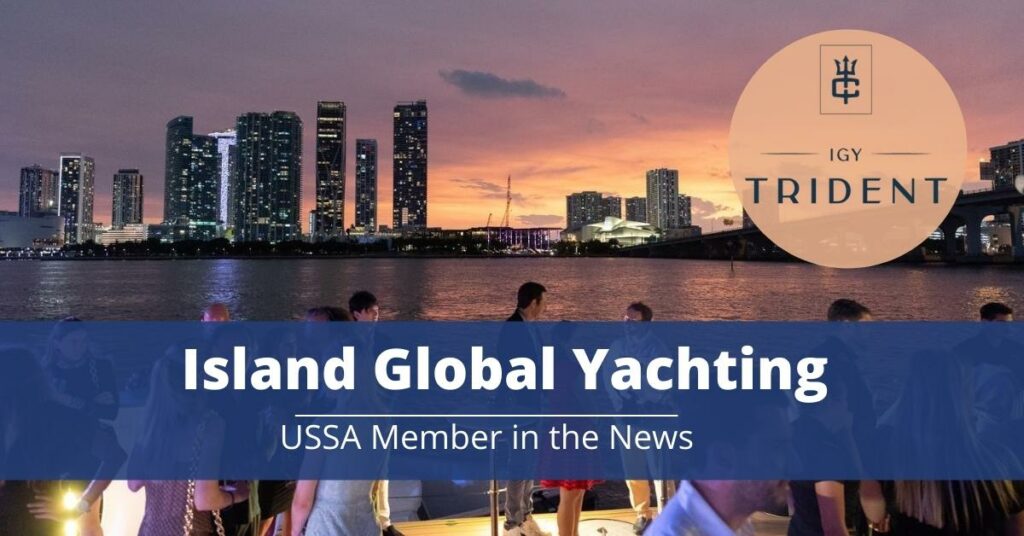
Industry-first membership collective partners with World Fuel Services, Navium Marine, Forbes Travel Guide, BWA Yachting and VIGILINT
Fort Lauderdale, FL – May 2, 2022 —Island Global Yachting LLC (“IGY”), the only global network of premium yachting destinations and yacht management services, is launching its IGY Trident Collective, the first-ever global collective of superyacht owners. This highly exclusive, by invitation only private membership program is only available to a limited number of superyacht owners – simplifying and enhancing superyacht ownership via specialized, next-generation benefits.
In collaboration with best-in-class partners, benefits include guaranteed global dockage, fuel bunkering, proprietary hull insurance, yacht management, crew service training, yacht agency services, captain and crew benefits, comprehensive health and wellness solutions, and access to curated lifestyle events and experiences.
“Our goal is to improve the economics and experience of yachting, building on our world-class destination base and yacht management platform,” says IGY Trident CEO Tom Mukamal. “People want simplicity in a very difficult and fragmented environment. Between the owner and marina, there are 10-plus different stakeholders. IGY Trident offers a comprehensive set of services administered from a single source.”
IGY’s global portfolio of superyacht-oriented properties extends to 23 marinas in 13 countries across the United States, Caribbean, Europe, and Latin America. In March 2022, IGY took over operations of the Vieux-Port de Cannes, a 700+ slip marina in the heart of the French Riviera. The company is poised to continue expanding into some of the most desirable cruising regions for superyacht owners.
IGY TRIDENT’S SUITE OF SERVICES IGY Trident’s suite of services is supported by visionary industry partnerships resulting in a first-in-class ecosystem:
IGY offers IGY Trident members guaranteed dockage access and member pricing on marina services, including dockage and fuel, across IGY’s 23 marina destinations worldwide. Fairport Yacht Support, IGY’s yacht management platform, provides exclusive IGY Trident member pricing and access to yacht management services, including financial administration, crew management, and technical yacht support. World Fuel Services provides member pricing on global fuel bunkering including in Gibraltar, access to a dedicated 24/7 technical team, transparent member pricing and access to carbon offset credits. Navium Marine provides exclusive IGY Trident member access to its proprietary hull insurance program. Vessels engaged in the program enjoy coverage terms that meet or exceed their current coverage and participate in a tranche of capacity dedicated to themselves and fellow IGY Trident members only. A profit share, if available, is issued annually across the portfolio. BWA Yachting offers global yacht agency and concierge services with benefits specifically for IGY Trident members. Forbes Travel Guide engages directly with the superyacht crew of IGY Trident members, delivering proprietary superyacht crew service training. The best-in-class professional development curriculum is customized for superyacht crews based on the principles of exceptional service that FTG’s highly experienced trainers teach at Five-Star hotels globally. VIGILINT provides IGY Trident members with a comprehensive health and wellness solution via its industry leading Global MedAssist Program, delivering 24/7, real-time medical consultation, comprehensive care, critical care transport, and access to a Cleveland Clinic specialist.
THE IGY TRIDENT COMMUNITY IGY Trident intends to host innovative, intimate member events and experiences around the globe, including private concerts and invite-only social gatherings designed for superyacht owners.
“We know from speaking with our superyacht owner clients that they are interested in meeting and attending special events with other like-minded superyacht owners,” Mukamal says. “IGY Trident brings together the first ever community of superyacht owners, opening doors for communication and dealings both inside and outside of yachting.”
About Island Global Yachting LLC IGY’s worldwide network of properties sets luxury standards for service and quality in nautical tourism. IGY has the only global portfolio of premium yachting destinations, serving over 8,000 annual customers at 23 marinas in 13 countries. IGY’s unprecedented collection of marinas in the U.S., Caribbean, Europe, and Latin America caters to a variety of vessel types and serves as the exclusive home port for many of the world’s largest superyachts. Discover the network of IGY at igymarinas.com .
About IGY Trident IGY Trident is a next generation membership collective specifically designed to simplify the experience of superyacht ownership. IGY Trident members enjoy a wide range of highly exclusive benefits, including dockage, fuel, yacht management, insurance, crew training, provisioning, health and wellness, and events and experiences. igytrident.com/ [email protected]
About Axcess Worldwide Axcess Worldwide—a partnership and brand development firm—worked closely with the IGY leadership team to help conceive and develop IGY Trident. Axcess Worldwide connects ideas, people, and brands in unprecedented ways. For 23-plus years, the company has leveraged deep-rooted, global relationships to reimagine how leading brands work together while creating opportunity, acceleration, measurable impact, and revenue. axcessworldwide.com
Login to your account
- Username/Email Address:
Forgot Password? | Sign Up
Reset Password
Already have an account? Login
Enter the username or e-mail you used in your profile. A password reset link will be sent to you by email.
Signup to your Account
- Candidate I want to discover awesome companies.
- Employer I want to attract the best talent.
- First Name *
- Last Name *
- Confirm Password *
- Organization Name
Account Activation
Before you can login, you must active your account with the code sent to your email address. If you did not receive this email, please check your junk/spam folder. Click here to resend the activation email. If you entered an incorrect email address, you will need to re-register with the correct email address.
- Your Email:
- Activation Code:

- 1. Introduction
- 2. Urban island parameters
- 4. The urban “heat island” in Moscow
- 5. The urban “dry island” in Moscow
- 6. The analysis of the city development
- 7. Conclusions
Ackerman , B. , 1987 : Climatology of Chicago area urban–rural differences in humidity . J. Climate Appl. Meteor. , 26 , 427 – 430 , doi: 10.1175/1520-0450(1987)026<0427:COCAUR>2.0.CO;2 .
- Search Google Scholar
- Export Citation
Baker , L. A. , A. J. Brazel , N. Selover , C. Martin , N. McIntyre , F. R. Steiner , A. Nelson , and L. Mussacchio , 2002 : Urbanization and warming of Phoenix (Arizona, USA): Impacts, feedbacks, and mitigation . Urban Ecosyst. , 6 , 183 – 203 , doi: 10.1023/A:1026101528700 .
Bespalov , D. P. , Ed., 1969 : Instructions for hydrometeorological stations and posts: Part I (in Russian). Gidrometeoizdat Rep. 3, 307 pp.
Böer , W. , 1964 : Technische Meteorologie ( Technical Meteorology ). B. G. Teubner Verlagsgesellschaft, 232 pp.
Central State Archive of Moscow , 1957 : Main parameters of Moscow economy and culture development: Statistical collection—1956 (in Russian). Archive Fund R-126, Inventory 10, No. 747, 166 pp.
Central State Archive of Moscow , 1963 : Moscow in numerals: Short statistical collection—1959–1962 (in Russian). Archive Fund R-126, Inventory 10, No. 750, 201 pp.
Central State Archive of Moscow , 1964 : Development of housing and communal services and automobile transport of Moscow in 1961–1963 (in Russian). Archive Fund R-126, Inventory 10, No. 631, 45 pp.
Chandler , T. J. , 1967 : Absolute and relative humidities in towns . Bull. Amer. Meteor. Soc. , 48 , 394 – 399 .
Debbage , N. , and J. M. Shepherd , 2015 : The urban heat island effect and city contiguity . Comput. Environ. Urban Syst. , 54 , 181 – 194 , doi: 10.1016/j.compenvurbsys.2015.08.002 .
Gallo , K. , and G. Xian , 2014 : Application of spatially gridded temperature and land cover data sets for urban heat island analysis . Urban Climate , 8 , 1 – 10 , doi: 10.1016/j.uclim.2014.04.005 .
Gavrilova , I. N. , 2000 : Demographical portrait of Moscow in time of Great Patriotic War (in Russian) . Quest. Hist. , 2 , 118 – 127 .
Great Russian Encyclopedia , 1998 ; s.v. Moscow (in Russian). Great Russian Encyclopedia Scientific Publishing House (Russian Academy of Sciences), 976 pp.
Great Soviet Encyclopedia , 1980 ; s.v. Moscow (in Russian). Great Soviet Encyclopedia Publishing House, 688 pp.
Howard , L. , 1818 : The Climate of London, Deduced from Meteorological Observations, Made at Different Places in the Neighbourhood of the Metropolis. Vol. 1. W. Phillips, 346 pp.
Isaev , A. A. , 2001 : Ecological Climatology (in Russian). Scientific World, 456 pp.
Kedrolivansky , V. N. , 1937 : Meteorological Instruments (in Russian). Central Direction of Hydrometeorological Service, 318 pp.
Kratzer , P. A. , 1956 : Das Stadtklima ( The Urban Climate ). Braunschweig, 221 pp.
Kuttler , W. , S. Weber , J. Schonnefeld , and A. Hesselschwerdt , 2007 : Urban/rural water vapour pressure differences and urban moisture excess in Krefeld, Germany . Int. J. Climatol. , 27 , 2005 – 2015 , doi: 10.1002/joc.1558 .
Landsberg , H. E. , 1981 : The Urban Climate . Academic Press, 275 pp.
Landsberg , H. E. , and T. N. Maisel , 1972 : Micrometeorological observations in an area of urban growth . Bound.-Layer Meteor. , 2 , 365 – 370 , doi: 10.1007/BF02184776 .
Lokoshchenko , M. A. , 2013 : Urban ‘heat island’ phenomenon and climate of Moscow city. Proc. Int. Conf. on Urban Climate and History of Meteorology , Florence, Italy, Institute of Biometeorology, 170–175.
Lokoshchenko , M. A. , 2014 : Urban ‘heat island’ in Moscow . Urban Climate , 10 , 550 – 562 , doi: 10.1016/j.uclim.2014.01.008 .
Lokoshchenko , M. A. , 2015 : Long-term dynamics of the urban ‘heat island’ in Moscow. Proc. Ninth Int. Conf. on Urban Climate/12th Symp. on the Urban Environment , Toulouse, France, International Association for Urban Climate/Amer. Meteor. Soc., 17-11-4011378.
Lokoshchenko , M. A. , and E. L. Vasilenko , 2010 : Long-term changes of Moscow climate. Proc. Int. Geographical Union Regional Conf. , Tel Aviv, Israel, International Geographical Union, 0205.
Moscow Province Council , 1915 : Observation results of meteorological stations of the second category (in Russian). Yearbook of Meteorological Network of Moscow Province Council , Vol. 2, No. 1, Moscow Province Council, 860 pp.
Oke , T. R. , 1978 : Boundary Layer Climates. John Wiley and Sons, 372 pp.
Rasul , A. , H. Balzter , and C. Smith , 2015 : Spatial variation of the daytime surface urban cool island during the dry season in Erbil, Iraqi Kurdistan, from Landsat 8 . Urban Climate , 14 , 176 – 186 , doi: 10.1016/j.uclim.2015.09.001 .
Reifer , A. B. , and Coauthors , 1971 : Handbook on Hydrometeorological Instruments and Systems (in Russian). Gidrometeoizdat, 372 pp.
Robaa , S. M. , 2003 : Urban–suburban/rural differences over greater Cairo, Egypt . Atmósfera , 16 , 157 – 171 , http://www.revistascca.unam.mx/atm/index.php/atm/article/view/8512/7982 .
Rubinstein , Ye. S. , 1979 : Homogeneity of Meteorological Rows in Time and in Space in Connection with Studying of Climate Change (in Russian). Gidrometeoizdat, 79 pp.
Shechtman , P. B. , Ed., 1953 : Climatological handbook of the USSR: Part I: Air temperature—Meteorological data for separate years (in Russian). Moscow Division of Hydrometeorological Service Rep. 8, 479 pp.
—— , 1959 : Climatological handbook of the USSR: Part V: Air humidity—Meteorological data for separate years (in Russian). Moscow Division of Hydrometeorological Service Rep. 8, Vol. 1, 298 pp.
—— , 1971 : Climatological handbook of the USSR: Part I: Air temperature—Meteorological data for separate years (in Russian). Moscow Hydrometeorological Observatory Rep. 8, 330 pp.
—— , 1972 : Climatological handbook of the USSR: Part V: Air humidity—Meteorological data for separate years (in Russian). Moscow Hydrometeorological Observatory Rep. 8, 257 pp.
Ulianova , G. N. , 2006 : Moscow, 1914–2004. Europe Since 1914: Encyclopedia of the Age of War and Reconstruction , Vol. 3, Charles Scribner’s Sons, 1802–1810.
Unkašević , M. , O. Jovanović , and T. Popović , 2001 : Urban–suburban/rural vapour pressure and relative humidity differences at fixed hours over the area of Belgrade city . Theor. Appl. Climatol. , 68 , 67 – 73 , doi: 10.1007/s007040170054 .
Vasilenko , E. L. , and M. A. Lokoshchenko , 2009 : Centennial changes of humidity parameters in Moscow (in Russian). Proc. 13th Int. Conf. of Young Scientists , Zvenigorod, Russia, Obukhov Institute of Atmospheric Physics, 22–23.
Wilby , R. L. , P. D. Jones , and D. H. Lister , 2011 : Decadal variations in the nocturnal heat island of London . Weather , 66 , 59 – 64 , doi: 10.1002/wea.679 .
Satellite image of Moscow region. The image is based on the data of the ScanEx Research and Development Center ( http://www.kosmosnimki.ru ). The white line indicates the contours of Moscow in 1992–2011. Green patches are forests.
Horizontal field of the surface air temperature in Moscow and its long-term changes: (a) 1887–89, (b) 1915–16, (c) 1954–55, (d) 1991–97, and (e) 2010–14. The grayish doubled line indicates the contours of Moscow in 1890 for (a), in 1916 for (b), in 1960 for (c) and in 1992–2011 for (d) and (e); stars are ground meteorological stations; thick black lines are mean annual isotherms. Arrows indicate the location of some stations outside the margins of the figure and their directions.
Dynamics of the UHII in Moscow: (a) average data for five periods of several years, (b) mean annual data for each year since 1951, and (c) moving-averaged values for each five years since 1953. Values from 1951 to 2014 are calculated by the data of 5 urban and 13 rural stations that exist now.
Long-term dynamics of mean annual humidity parameters in Moscow in 1870–2015.
Horizontal field of the relative humidity in Moscow and its long-term changes: (a) 1891–97, (b) 1915–16, (c) 1954–55, (d) 1991–97, and (e) 2010–14. Doubled thin black lines indicate the contours of Moscow city in 1890 for (a), in 1916 for (b), in 1960 for (c), and from 1992 to 2011 for (d) and (e); stars are ground meteorological stations; thick blue lines indicate mean annual isovapors. The black star is the station closest to the city center, gray stars are other urban stations, and open stars are rural stations. Stations are labeled as B for Biryulyovo, T for Tushino, N for Nemchinovka, P for Pogodinka, C for CPKR, G for GAMS, and Ph for Phili. Arrows indicate the location of some stations outside the margins of the figure and their directions.
Dynamics of the UDII in the city of Moscow.
Dynamics of factors that influence the intensity of UHI: (top) dynamics of urban population and its density in Moscow, (middle) dynamics of urban population density in the center of Moscow, and (bottom) dynamics of annual electric power consumption in Moscow and the Moscow region.
The central part of Moscow. Thin black lines indicate the boundaries of old urban districts before 1992 and of new administrative districts since 1992 (except one more special enclave district—Zelenograd—that is distant from the others). The shaded gray areas were used in calculations and show the (left) central districts before 1992 and (right) central administrative district since 1992.
- View raw image
- Download Powerpoint Slide
Related Content
Development and application of a physical approach to estimating wind gusts, evaluation of turbulent surface flux parameterizations for the stable surface layer over halley, antarctica, a numerical study of an extreme cold-air outbreak over the labrador sea: sea ice, air–sea interaction, and development of polar lows, objective verification of the samex ’98 ensemble forecasts.
- Previous Article
- Next Article
Urban Heat Island and Urban Dry Island in Moscow and Their Centennial Changes
Displayed acceptance dates for articles published prior to 2023 are approximate to within a week. If needed, exact acceptance dates can be obtained by emailing [email protected] .
- Download PDF
The long-term dynamics of both urban heat island (UHI) and urban dry island (UDI) intensities over the city of Moscow, Russia, has been analyzed for the period from the end of the nineteenth century until recent years using data of the ground meteorological network. Besides traditional maximum heat/dry island intensity, an additional parameter—station-averaged intensity as a mean difference between the data of all urban and rural stations—has been used. The traditional maximum (mean annual) UHI intensity in Moscow was nearly 1.0°C at the end of the nineteenth century, 1.2°C one century ago, 1.5°–1.6°C both in the middle and at the end of the twentieth century, and 2.0°C in recent years. The station-averaged UHI intensity was equal to 0.7°–0.8°C in the second half of the twentieth century and increased up to 1.0°C in recent years. It is probable that stabilization of both parameters from the 1950s to the 1990s was connected with the extensive city growth at that time (mass resettlement of inhabitants from the overpopulated city center to the new urban periphery since the 1960s). The new increase of UHI intensities is the result of the new intensive city growth. The relative humidity in Moscow significantly decreased during the last 146 years (mostly because of warming), unlike water vapor pressure. The UDI is closely connected with the UHI; the absolute value (modulus) of its intensity is increasing in time from −4% at the end of the nineteenth century to −9% now. During the last two decades, the UDI as well as the UHI became much stronger than before.
Publisher's Note: This article was revised on 24 January 2018 to add the additional affiliation of the author, which was missing when originally published.
© 2017 American Meteorological Society. For information regarding reuse of this content and general copyright information, consult the AMS Copyright Policy ( www.ametsoc.org/PUBSReuseLicenses ).
The urban heat island (UHI) is a well-known phenomenon that was first discovered in London, United Kingdom, by L. Howard ( Howard 1818 ). Since the beginning of the nineteenth century, it has been analyzed almost everywhere in the world ( Böer 1964 ; Kratzer 1956 ; Landsberg 1981 ; Oke 1978 ; etc.). As is known, almost every city and even every village creates its own canopy UHI (i.e., warmer air temperatures on average than the surrounding rural area, at least in the evening, at night, and in the early morning). The only exceptions are specific geographical conditions: for example, some cities are cooler than their outskirts in dry tropical deserts because of the urban “oasis effect”: Beersheba, Israel, all the year round before 1985 (O. Potchter 2011, personal communication); Cairo, Egypt, in late autumn ( Robaa 2003 ); Arbīl, Iraq, in Kurdistan during the dry season ( Rasul et al. 2015 ); irrigated urban areas of Phoenix, Arizona, during the daytime ( Baker et al. 2002 ); and so on. Some general conclusions about the UHI in different cities are made in Lokoshchenko (2014) .
It is usual to study only daily and/or seasonal variability of the UHI, but another interesting and important direction is the analysis of UHI long-term centennial changes. This analysis for Moscow, Russia, was first made ( Lokoshchenko 2013 ) for the period from 1915 to 1955; it was then expanded for the period from 1887 to 1997 ( Lokoshchenko 2014 ), and stabilization of the UHI intensity in the second half of the twentieth century was discovered. It was supposed ( Lokoshchenko 2014 ) that the deceleration of the UHI intensity growth is connected with the extensive development of the city, but adding new data for recent years surprisingly shows a new sharp growth of the UHI intensity during the last two decades ( Lokoshchenko 2015 ). Thus, the main purpose of this paper is to study long-term changes of Moscow UHI from the 1880s until nowadays and to explain its dynamics using all of the available data on urban population and its density and energy consumption.
In addition, another climatic phenomenon—the urban dry island (UDI)—and its centennial dynamics for the same period have also been studied for the first time. It is probable that the UDI was first described in Berlin and Munich, Germany ( Kratzer 1956 ), but usually this phenomenon is known only by data averaged over more or less shorter periods. As one knows, relative humidity F depends on two parameters: water vapor pressure e and air temperature T because F = e / E × 100%, where saturation vapor pressure E is a function of T . Thus, the UDI is closely connected with the UHI and is the direct result of higher T in the city. In addition, the urban dry island is also the result of less evaporation in a city because of small green areas, anthropogenic precipitation drainage, and so on. As is known, the relative humidity in cities is usually lower than in the rural zone (e.g., Kratzer 1956 ; Landsberg 1981 ). For example, the mean monthly difference of F inside and outside the city of Belgrade, Serbia, ranges from −11% to +5% ( Unkašević et al. 2001 ). The difference of F in Chicago, Illinois, and in its outskirts is usually from −3% to −11% depending on the season and the time of day ( Ackerman 1987 ). According to Landsberg and Maisel (1972) , the average daily difference of F inside and outside the city of Columbia, Maryland, is −4%, and one-half of this value is the result of UHI, whereas the other half is the result of lower urban evapotranspiration.
The geographical basis of reliability of the UHII A as a new parameter is the well-known fact that a heat island often represents a “plateau” form in the field of T with a sharp increase of air temperatures close to city margins ( Landsberg 1981 ). It is evident that if the density of urban development is nearly the same everywhere inside a city then T C ~ T U and parameters UHII MAX and UHII A are close to each other. On the other hand, the more inhomogeneous an urban area inside a city is, the bigger the difference between T C and T U is. Of course, the UHII A value may be analyzed only if the ground meteorological network is dense, that is, if several weather stations operate inside a city simultaneously. Note that the traditional parameter UHII MAX strongly depends on the environs and data quality of only one central urban station. The values of UHII MAX may be biased in time if the close vicinity of a central station has significantly changed or if a central station was displaced. For this reason, UHII A seems to be a more statistically trustworthy parameter than UHII MAX . A similar approach (calculation of UHII A ) was used for gridded data for mean annual values of T on the basis of 1 km × 1 km grid cells by Gallo and Xian (2014) and for minimum T on the basis of 1 km × 1 km grid cells by Debbage and Shepherd (2015) . Below, we shall use both parameters in their comparison with each other.
Note that, since at least the end of the nineteenth century, the air temperature T was measured in the Russian Empire and then in the Soviet Union and Russian Federation at the 2-m level above the surface using classical August psychrometers (which include dry and wet mercury thermometers) in special meteorological boxes—in the “Russian box” (Wild box) from 1874 until 1910–14 and later in the “English box” (Stevenson box). The accuracy of T measurements is in the limits of ±0.2°C for positive values and ±0.3°C for T < 0°C ( Reifer et al. 1971 ). The frequency of measurements was three times per day at 0700, 1300, and 2100 LT (the so-called classical Mannheim hours that were used since the eighteenth century) before 1936; four times per day at 0100, 0700, 1300, and 1900 LT from 1936 to 1965; and eight times per day (every 3 h) from 1966 to the present. All thermometers at any station are tested regularly in accord with the standards of the Russian Hydrometeorological Service; their instrumental correction is usually tested by measurements of the 0°C value (low reference point) in melting snow and other values (±5°, ±10°C, etc.) in some liquids (e.g., in spirits) with the use of a reference platinum thermometer.
The atmospheric humidity, according to classical order, is measured using either an August psychrometer (i.e., simultaneous readings of both dry and wet thermometers in a Stevenson box; Kedrolivansky 1937 ) when T ≥ −10°C or a hair hygrometer in the same box if T < −10°C ( Bespalov 1969 ). Thus, constant instrumentation provides a homogeneous long-term time series. Mean annual temperature and mean relative humidity F are calculated as an average of 12 monthly averaged values of T and F , respectively.
The main part of Moscow (except six protuberances) has a symmetrical ellipsoidal form. It is located on flat terrain that is almost homogeneous with no vast areas of open water. As seen from a satellite image ( Fig. 1 ), the Moscow River, which flows across the city from northwest to southeast, is narrow (its width inside the city is only 120–200 m). Therefore, it does not influence the T spatial field except for microscale thermal effects along its banks. Note also that the Moscow region is a significantly forested zone; forests cover about 40% of the region.

Citation: Journal of Applied Meteorology and Climatology 56, 10; 10.1175/JAMC-D-16-0383.1
- Download Figure
- Download figure as PowerPoint slide
The urban heat island intensity in Moscow was studied for five separate periods ( Fig. 2 ). Figure 2a shows the following ( Lokoshchenko 2014 ): at the end of the nineteenth century, on an average of 3 yr, the difference between T at Landmark Institute (an almost central station located 3.3 km from the Kremlin center) and Mikhelson Observatory (in the close city outskirts) was equal to 0.9°C, whereas the difference between Landmark Institute and Nikolskoye-Gorushki station in the far rural zone was greater: 1.2°C ( Shechtman 1953 ). Of course, only one rural station is insufficient for the analysis; moreover, this difference may be a bit overestimated because of geographic zonality (this station was located to the north of the city). Nevertheless, we can suppose that the heat island intensity UHII MAX was equal to about 1.0°C at that time. It is evident that this parameter of the UHI intensity is only available from the data of one urban station.

Almost 30 years later, six meteorological stations—two urban ones and four close rural ones—operated in this area ( Fig. 2b ). As is seen, the +4°C isotherm is a semicircle and goes around the southern margin of the city during the First World War. In total, 15 meteorological stations including two urban ones operated in the Moscow region at that time (six of them are shown in Fig. 2b ). The mean T in the rural zone outside the city during these two years was in the range from +2.6° to +3.6°C for 13 rural stations at a distance up to ~100 km from the city (some stations are outside the margins of Fig. 2b ). On average, it is equal to +3.2°C both for all of these 13 stations and for four rural stations in the close vicinity of the city (up to 35 km) as Fig. 2b shows. Hence, the UHII MAX value in 1915–16 was equal to 1.2°C according to Eq. (1) . The methodical questions about the real rural air temperature and some details of this analysis are discussed in Lokoshchenko (2014) . In this paper, the UHII MAX for this period was initially supposed to be a bit higher: from 1.2° to 1.4°C, taking into account the value of T = +3.0°C at two stations as probably a real rural background.
Forty years later ( Fig. 2c ), the density of the ground meteorological network was the highest: at least 34 stations were operating in the Moscow region, including 13 stations inside the present-day margins of the city. Note that in the mid-1950s the margins of Moscow were unclear: they were fixed five years later, in August 1960 (an ellipsoid in Fig. 2c ). Nevertheless, probably 10 of these 13 stations were really inside the city in 1954–55, and the other three represented close suburbs at that time. Initially ( Lokoshchenko 2014 ), the measurements of only 8 urban stations and 24 rural ones were analyzed by Shechtman (1971) . Later the author found the archival data of two more special urban stations [Main Aviation Meteorological Station (GAMS) and Phili] that operated in the city at that time but were not included in Shechtman (1971) ; now they have been included in the analysis. The heat island is marked here by two quasi-circle isotherms: +4° and +5°C. The closest station to the city center, Balchug, which is situated only 0.6 km to the south of the Kremlin (1.1 km from the Kremlin center), showed the highest air temperature at that time: +5.35°C. All other urban stations showed a gradual decrease of T from the center to city margins. The mean T inside the city was +4.61°C on the basis of the data from 10 real urban stations and +4.50°C by the data from all 13 stations that were located inside up-to-date margins of the city; previous mean values from 8 old urban stations and 11 new (since 1960) urban stations in Lokoshchenko (2014) were the same, to an accuracy of 0.1°C. In the rural zone of the Moscow region, the mean T at that time was equal to +3.79°C averaged over the data from 24 stations (and +3.74°C; i.e., only a little lower by the data of 21 stations outside modern city margins). Thus, in 1954–55, the traditional UHII MAX intensity value in Moscow (i.e., the difference between Balchug station and all 24 rural stations) was about +1.56°C, whereas the UHII A value (the difference between 10 urban and 24 rural stations) was equal to +0.82°C. With the account of new city margins (13 urban and 21 rural stations), both UHII MAX and UHII A are the same, to an accuracy of 0.1°C: +1.6° and +0.8°C. It should be taken into account that the ground meteorological network in the Moscow region was later reduced, and only 5 urban stations, including Balchug, and 13 rural stations remained in 1991–97 and 2010–14. Thus, for a more correct comparison of different periods, we must use a lower number of stations. The mean T in the urban area in 1954–55 by the data of only the five stations that exist now is nearly the same (+4.48°C), however, and outside the city by the data of 13 stations it is exactly the same (+3.79°C). Hence, recalculated for n = 4 in Eq. (2) and m = 13 in Eqs. (1) and (2) , the UHII MAX value is the same as before (+1.56°C) and the UHII A value is only a little lower (+0.69°C).
The heat island mapping from 1991 to 1997 ( Fig. 2d ) demonstrates two semicircle isotherms: +6°C in the city center and +5°C around the western city margins. The maximum T in the city center (Balchug station) was equal to +6.48°C; the mean T inside the city by the data of five urban stations was +5.69°C, whereas outside the city it was +4.86°C averaged over the data of 13 stations. Note that in Lokoshchenko (2014 ) only 10 of 13 rural stations were used for the analysis of the 1991–97 period; the data rows of three more rural stations (Kashira, Klin, and New-Jerusalem) have breaks: either one or two of seven mean annual T values are absent for that time. Now the author has received restored values of T for all three of these stations for the lost years by comparing them with the closest neighboring stations and using simple correction as the average difference ∆ T between two stations for other years for which mean annual values were available at both places. Note that ∆ T is comparatively stable in time; its standard deviation σ from one year to another for closest stations at distances of 40–50 km on flat terrain (e.g., between Kashira and Kolomna) is only 0.09°C. Therefore, the probable error of the restored value of T on the average of seven years is only about ±0.01°C if one year is missing. So, as a result, these three stations were included in the analysis.
Thus, the UHII MAX intensity value was 1.62°C—that is, only about one-half of a tenth of a degree higher than 40 years ago. The UHII A value also increased only a little since the 1950s: 0.83°C. In fact, it seems to be a surprising result given the continued fast city growth in the second half of the twentieth century. That is why the UHI intensities for these two periods have been precisely analyzed with such a high accuracy of 0.01° Celsius.
In recent years (averaged from 2010 to 2014), as one can see in Fig. 2e , T in Moscow became still higher: +7.8°C at Balchug station and from 6.3° to 6.7°C at the other four urban stations. Thus, one more semicircle isotherm of +7°C appeared in the center of Moscow. On the basis of the same data sampling (5 urban and 13 rural meteorological stations), the values of UHII MAX and UHII A averaged over five recent years are 2.0° and 1.0°C, respectively. So, both parameters demonstrate a new growth after the previous period of their quasi stabilization. The consequent increase of the air temperature in Moscow from one period to another during 128 years is evident in Fig. 2 : T became higher by 0.5°C from 1887–89 to 1915–16, by 1°C from 1915–16 to 1954–55, by 1°C from 1954–55 to 1991–97, and by an additional 1°C from 1991–97 to 2010–14. This increase is the result of both global climate warming and rapid city growth. So, during 128 years, T grew by 4°C in the city center and by nearly 3°C in the rural zone of the Moscow region.
The results of the analysis are presented in Fig. 3a . It demonstrates long-term dynamics of the UHI intensity in Moscow during 128 years, both traditional [Eq. (1) ] and station averaged [Eq. (2) ]. The general growth is evident, but, as is seen, during the second half of the twentieth century both parameters of the UHI intensity changed only a little, whereas earlier and later the intensity growth was fast. In the previous work ( Lokoshchenko 2014 ), the values of UHII MAX and UHII A in 1954–55 and 1991–97 were received as equal. In this work, the author used the same number of stations during both periods for a more correct comparison and, in addition, three more rural stations were considered for the later period—nevertheless, the overall conclusion about quasi stabilization of the UHI has been confirmed. Figure 3b presents mean annual values of both intensity parameters from one year to another for a more detailed analysis of the dynamics (full data from all stations unfortunately are not available from 1966 until 1990). It is evident that one year may be an insufficient period for statistically reliable UHI intensity analysis because the general tendency is masked by local sharp maxima and minima due to specific weather phenomena in some years (mostly because of different durability of anticyclonic conditions that strongly influence intensity values). The standard deviations of mean annual UHII MAX and UHII A values are ~0.2°–0.3° and 0.1°C, respectively. Thus, the same dynamics has been analyzed again with the use of a moving average for a more clear indication of the general tendency. Both UHII MAX and UHII A mean annual values have been averaged for each 5 years with a 1-yr step in time for the 1953–2012 period ( Fig. 3c ). Indeed, as is seen, the estimations of both parameters were nearly the same in the 1950s and 1990s, and a new fast growth of the UHI intensity has started in the mid-2000s (since 2003–05).

Let us discuss another interesting phenomenon, the urban dry island. Figure 4 shows long-term variability of both e and F mean annual values for Moscow since 1870 when regular accurate measurements of both parameters started. This time series is combined with the data of three stations: Landmark Institute from 1870 to 1878 (which was the oldest meteorological station in Moscow before its closing in 1932), Mikhelson Observatory from 1879 to 1953 (which is the oldest Moscow station now), and Moscow University Observatory from 1954 to present. Note that monthly averaged values of both parameters were compared for the periods of simultaneous measurements at two stations (in 1879 for Landmark Institute and Mikhelson Observatory and from 1954 to 1970 for Mikhelson Observatory and University Observatory). It was found that the relations between the data in different urban locations are very close, especially for e values: linear correlation coefficient R is equal to 0.974 for relative humidity and even to 0.999 for water vapor pressure in both places ( Vasilenko and Lokoshchenko 2009 ). Therefore, this common row of data may be accepted as homogeneous. For the first time, this long-term dynamics was published by Vasilenko and Lokoshchenko (2009) and Lokoshchenko and Vasilenko (2010) ; in this paper, it is expanded to recent years. As is seen, water vapor pressure does not demonstrate systematic changes during the last 146 years. The linear regression coefficient K is equal to only 0.0015 hPa yr −1 ; thus it is seen that during the last 146 years the average water content in the ground air layer above Moscow increased on average by only a little—0.2 hPa. Such a small difference is evidently negligible and statistically nonsignificant. Of course, the change of e is not linear: for example, since the end of the 1970s, its growth became faster but during the recent years it decelerated again. Note that the dynamics of e inside and outside the city is very similar: for the period from 1966 to 1997 when the growth of e accelerated, the K value was equal to 0.007 hPa yr −1 by the data of Moscow University and was a bit larger, 0.012 hPa yr −1 , in the Moscow region by the average data of four rural stations (Mozhaisk, Pavlovsky Posad, Serpukhov, and Dmitrov).

Unlike this parameter, relative humidity F demonstrates a quick and systematic (steady in time) fall with the average rate of K = −0.06% yr −1 during the last 146 years; in other words, it decreased from 81% in the 1870s to nearly 72% in recent years. Inside the city, it is the result of general T increase due to both global warming and the intensification of the Moscow UHI. Outside the city, the long-term fall of F is the result of global warming only. So, it is not a surprise that in the Moscow region its rate of decrease is half as fast as inside the city. For the period from 1951 to 2015 (for which data on F in the Moscow region are available), the linear regression coefficient K of F mean annual values is −0.06% yr −1 at Moscow University and only −0.03% yr −1 in the Moscow region by the average data of the same four rural stations mentioned above.
The dynamics of the main humidity parameters allows one to understand long-term changes of the F spatial field in a big city. Let us discuss the dynamics of the urban dry island in Moscow as was done above for UHI. Note that human-body sensations and human health depend on relative humidity more than on absolute humidity level—thus, dryness is a more important parameter than any other humidity parameter such as water vapor pressure, specific humidity, and so on. The hygiene standard for a human body is the F in the range from 30% to 60% ( Isaev 2001 ).
One of the methodical problems of this study is the change in measurement frequency. As was already mentioned above, the meteorological measurements in the Russian Empire and in the Soviet Union were carried out three times per day before 1936, four times per day from 1936 to 1965, and eight times per day since 1966. The relative humidity data are available in Shechtman (1959 , 1972) as average values at each time of observation. To receive a homogeneous row of data, a special correction was made using hygrograph records (daily hygrograms) at the Moscow University meteorological observatory that indicate the values of F during every hour. A perfect (the most accurate) mean daily value of F 24 as an average of 24 hourly values during a day was compared with an average both of three values F 3 and of four values F 4 according to the time of observations in the past for each day during three years (1981–83). As a result, the correction coefficient between a perfect mean daily value and mean value of three times (0700, 1300, and 2100 LT) is equal to 1.0049 (standard deviation σ = 0.0384; sample size n = 1095). The similar correction between F 24 and F 4 is equal to 0.9997 ( σ = 0.0386; n = 1095). On the basis of these corrections, all mean values of F before 1966 were recalculated by the author to receive a homogeneous data row.
Let us discuss the intensity of the UDI and its centennial dynamics in time. As was the case for the UHI, the analysis is possible only from the moment when two stations, urban and rural, began to operate simultaneously. In the Moscow region, only in 1879 did the second station (Mikhelson Observatory, formerly known as Petrovsko-Razumovskoye and TSKhA) appear; before that, only one station (Landmark Institute) operated in the city. Landmark Institute was located close to the Moscow Kremlin center (see above), and therefore it may be accepted as a central station. The station data on relative humidity F are unfortunately available only since 1891 ( Shechtman 1959 ) and for fewer stations than for T . Unlike air temperature, relative humidity at most stations in the Russian Empire was a seasonal parameter and was as a rule measured only during a warm season—hence, mean annual values are available for only a few of the stations ( Moscow Province Council 1915 ). Figure 5a shows that on average for the 1891–97 period we can compare the data of only two stations: Landmark Institute in the central part of the city and Mikhelson Observatory, which at that time represented close suburbs. None of the remote rural stations in the Moscow region measured F continuously in the 1890s. Averaged over seven years, F was equal to 75.0% at Landmark Institute and 78.9% at Mikhelson Observatory so that UDII MAX = −3.9% according to Eq. (3) . Of course, this value is only approximate because for more correct estimation of this parameter we need data from several rural stations.

One-quarter of a century later, during the First World War, the data of five stations in the Moscow region (four of which are presented in Fig. 5b ; one more was too distant from the city) are available. The lowest value of F in average of two years (76.9%) was received just in the city center (at Landmark Institute), whereas the second urban station Mikhelson Observatory (which appeared inside the city already at that time) registered a little higher value: 78.4%. At three rural stations, respective mean F values were 82.1%, 82.0%, and 78.7% (on average: 80.9%). So UDII MAX remained nearly the same as before: −4.0%. Even for such a short period (two years), this estimation seems to be very reliable because in 1915 and in 1916 UDII MAX was equal to −4.2% and −3.8%, respectively; that is, its change from one year to another is small. As one can see in Fig. 5b , the urban dry island is evidently a real geographical phenomenon because F grows both to the south and to the north of the city.
For the period of 1954–55, the data on F are available for 32 of 34 weather stations in the Moscow region [ Shechtman (1972) and additional archival data] except for two rural stations where data are available only on T ( Shechtman 1971 ). As Fig. 5c shows, the new central Balchug station at that time registered the lowest F value averaged over two years: 71.9%. At the same time, other urban stations demonstrated intermediate values from 74% to 76%, whereas at rural stations this parameter was from 77% to 80%. Two of three urban stations closest to Balchug station demonstrate a little higher value (74%), and only at GAMS station, in the close vicinity of the center, F = 76% (it is seen as a bending curve around it in Fig. 5c ). So, a comparatively high value could be the result either of microclimatic specifics of the GAMS location or of wrong instrumental correction to thermometers: either dry thermometer readings were a bit underestimated (it may be as well the cause of similar bending of the +5°C isotherm in Fig. 2c ), or wet thermometer readings were a bit overestimated, or both. Averaged over two years in the mid-twentieth century, the relative humidity inside the city (averaged by the data of 10 urban stations including Balchug marked by gray and black stars in Fig. 5c ) was equal to 74.7%, whereas in the Moscow region outside the city (averaged by the data of 22 rural stations that existed at that time), it was equal to 77.7%. Therefore, UDII MAX = 71.9% − 77.7% = −5.8%; UDII A = 74.7% − 77.7% = −3.0% for n = 9 and m = 22 in Eqs. (3) and (4) . For a more correct comparison with the next two periods, however, we should account for the reduction of the ground network. Therefore, all values were recalculated only for the data of stations that exist now: mean relative humidity was 74.8% in the city by the data of 5 urban stations and 77.9% outside the city by the data of 13 rural stations. Hence, average estimations are close to each other despite different sampling. As a result, both parameters of the UDI intensity are nearly the same as well: UDII MAX = −6.0%; UDII A = −3.1% (for n = 4 and m = 13).
Forty years later, averaged from 1991 to 1997 ( Fig. 5d ), the F value at the central urban Balchug station was equal to 73.0%, the average over all 5 urban stations was 76.0%, and the average of all 13 rural stations was 78.1%. Thus, UDII MAX = −5.1% and UDII A = −2.1%. In reality, UDI is contoured by the 75% isoline and includes only three stations. Besides Balchug, the isoline includes two more stations: University and Nemchinovka (a close rural station that is located only 1 km to the west of the city margin; usually, it demonstrates intermediate position between urban and rural stations), where the F value was only a little higher than at Balchug station: 74%. In the north of the city and in the rural zone, average F values were from 76% to 80%. So, the UDI became weaker than it was in the mid-1950s because the average F in the urban area increased significantly (by 1.2% for the same 5 stations), whereas outside the city, it remained nearly the same (it increased only a bit by the data of the same 13 stations: by 0.2%). As one can see in the 1990s, all urban stations except for University station demonstrate higher relative humidity than was observed 40 years ago.
Averaged over the five years from 2010 to 2014, the F value at Balchug station is the lowest among other stations: 68.0%; the mean F values in urban and rural areas by the data of the same 5 and 13 stations are 73.2% and 76.6%, respectively. Hence, UDII MAX = −8.6% and UDII A = −3.4%; so, UDI recently became much stronger than before. As a result, for the first time, it is marked by two isovapors (lines of the same relative humidity): 70% and 75%. The absence of observations to the south and to the east of the city unfortunately makes it not possible to close the isovapors.
Some details of the above analysis and methodical questions need a brief comment. Note that data rows of both the Landmark Institute and Mikhelson Observatory are complete and continuous in time. Unlike them, at some other stations there were short breaks in observations. For example, at Biryulyovo (southern rural station in Fig. 5b ) and at Ramenskoye forestry (one of two northern rural stations at that time), the data on F during 1915 and 1916 are available for 22 of 24 months, whereas at Sergiyev Posad (another northern station) data were available only for 17 of 24 months. In a similar way, in 1954 and 1955 relative humidity was measured at Central Park of Culture and Recreation (CPKR) urban station during 21 of 24 months and at Kashira rural station during 20 of 24 months. During the period from 1991 to 1997, there were several breaks as well: the data on F at Balchug and Tushino urban stations were respectively received for 83 and 82 of 84 months. Of 84 months, data were received for 83 months at Klin and Kolomna rural stations, 82 months for Kashira and New-Jerusalem, 80 months at Serpukhov, and only 70 months at Klin. In all of these cases, missing values for some months were restored as the most probable values using special correction in comparison with the nearest station. The mean coefficient K between the values of two stations for the same month (when a break at one of them occurred) during several years before and after a break was used (it is important to note that K may be a function of the annual cycle and therefore for the correction we need to use a comparison for the same month). Note that the spatial field of relative humidity is relatively smoothed in conditions of flat relief and in the absence of large areas of open water. The linear correlation coefficient R between mean monthly values of F at several neighboring stations, both in the city and in the rural zone (at distances from 50 to 90 km from each other), for the period of 1990–2000 ranges from 0.92 to 0.96. As is known, the R values of the spatial field of air temperature in the Moscow region at distances up to 100 km are very similar—higher than 0.8 in the warm season and higher than 0.9 in winter ( Rubinstein 1979 ). As a result of the smoothed F field, relations between mean values of F at neighboring weather stations (up to 100 km from each other) are close (as a rule, K is limited to being from 0.95 to 1.05) and steady in time (standard deviation σ K of K values in different years is on average only 0.04). This means that a possible error of the monthly averaged restored value of F taking into account the σ K value and a typical range of this parameter (usually from 70% to 80%; extreme monthly averaged values can range from 55% to 95% depending on a season) is about 2%–3%. Hence, for example, if at any station, 2 of 84 monthly averaged values are unknown, the most probable error of the total F value averaged over seven years there is only 0.05%–0.07% (i.e., very small). Note as well that Tushino urban station (star in the northwestern part of the city in Figs. 5c–e ) was replaced and has operated 6.5 km to the north from its previous location since 1986.
Another specific correction was made for the data of Pogodinka urban station for the period of 1954–55 where, since June of 1955, the measurements of F began to be made only three times per day instead of four times like before—without a nocturnal reading at 0100 LT. For this station, a comparison with nearest neighbor University Observatory station (3.0 km away from Pogodinka station) was carried out for this nocturnal time only. The coefficient between nocturnal values of F at these two stations in 1954 (when measurements were simultaneous at both places) was used for each month since June–December of 1955 to restore missing values at Pogodinka; then mean monthly values F 4 were calculated by three real values and one restored value, and last a correction 0.9997 was used to get accurate daily averaged estimation. Here, the correction was based on simultaneous data during only one year because University Observatory station was founded in 1954 and soon after 1955 Pogodinka station was closed. Thus, the rows of F data are continuous at both stations in 1891–97, at 2 of 5 stations in 1915–16, at 29 of 32 stations in 1954–55, at 10 of 18 stations in 1991–97, and at all 18 stations in 2010–14.
Long-term changes of the UDI intensity are presented in Fig. 6 as was done above in Fig. 3 for the UHI intensity. Similar to Fig. 3 , both UDII MAX and UDII A values for the period 1954–55 are shown here for a reduced number of stations (5 urban and 13 rural) that operate now for a more correct comparison with the two later periods. As is seen, the UDI intensity dynamics is complicated and nonmonotonic. Periods of clear UDI intensification in the beginning of the twentieth century and during the last two decades are separated by the UDII fall—both maximum and average—in the second half of the past century. This result seems unexpected. The question is what happened and why did UDI become weaker in the 1990s than it was before? This fall corresponds to quasi stabilization of the UHI intensity that took place at that time as was shown above. So, why did the UDI intensity not stabilize as well?

Its fall was evidently not the result of some local changes in the close vicinity of the central station Balchug because the UDII A value, as is seen, also decreased. True, one of five urban stations was displaced as already mentioned, but four other stations remained where they were in the 1950s. According to additional calculations accounting for only four urban stations without Tushino, UDII A = −3.5% in 1954–55 and UDII A = −3.0% in 1991–97. Thus, it is seen that weakening of the UDI was a real effect and was not the result of the displacement of one station. The method of humidity measurements and even the type of sensors remained everywhere the same because the Soviet meteorological service was classical and conservative. Note as well that this fall was not the result of some changes in the air moisture content because the e data of University Observatory station remained nearly the same: it was on average 7.6 and 7.7 hPa, respectively, for the periods 1954–55 and 1991–97. In addition, the reduction of UDI intensities was not the consequence of a too-short period of only two years of averaging in 1954–55. An additional calculation was made for 7 years from 1954 to 1960, and the mean F value at Balchug station was received as 71.9%; the mean F at urban (5 stations) and rural (13 stations) areas was 74.8% and 78.2% respectively; thus, UDII MAX = −6.3%; UDII A = −3.4%, and therefore averaged over 7 years in the 1950s the UDI was even deeper and, hence, its fall during the next 37 years was even sharper.
The most probable cause of the UDI weakening is the intensive greening of the city. However, park and forest zones inside Moscow did not increase inside new city margins: the total area of all green zones was 68.7 km 2 in 1958, 167.8 km 2 after city extension in 1961 ( Central State Archive of Moscow 1964 ), nearly 66 km 2 in 1978 ( Great Soviet Encyclopedia 1980 ), and 65.6 km 2 in 1995 ( Great Russian Encyclopedia 1998 ). Thus, the reason for the UDI weakening in Moscow from the 1950s to 1990s remains an open question.
Nevertheless, despite a temporary decrease, in general during the whole period of the F measurements, the UDI in Moscow became stronger: from −4% at the end of the nineteenth century to −9% in recent years. It is evident that this effect is an indirect consequence of the UHI intensification because both phenomena are closely connected (the warmer the urban air is, the drier it is). It is interesting to note that, according to Kratzer (1956) , the average intensity of the UDI in German and Austrian cities (apparently the UDII MAX value) was from −4% to −6% in the beginning of the twentieth century. In Parma, Italy, this parameter in the 1970s was equal on average to −5% ( Landsberg 1981 ). In the afternoon in anticyclonic conditions, however, the difference of F between the urban center and the park zone may be much bigger—up to 30% as was observed in Munich ( Kratzer 1956 ).
Note that the level of absolute humidity mostly reflects total water content in different air masses, and so its variability is large scale and the spatial field of e is comparatively smoothed. According to Oke (1978) , the difference between the values of e inside and outside cities is small and changes its sign in the daily cycle. Thus, unlike average dryness, average humidity does not demonstrate time-stable local effects such as an urban island. The urban “humidity island” (i.e., higher values of e inside the city) may exist only late in the evening and at night in anticyclonic conditions because of the absence of dew or at least much weaker dew in the city than in the rural zone ( Chandler 1967 ; Landsberg 1981 ; Oke 1978 ; Kuttler et al. 2007 ). Even if the urban humidity island exists in the afternoon, it is the strongest on average at night—for example, in Chicago ( Ackerman 1987 ).
For the period of 1991–97, the average e is 8.0 hPa in the city (by the data of 5 urban stations) and 7.9 hPa in the rural zone (by the data of 13 rural stations). The standard deviation σ is 0.5 hPa for the sampling of 35 mean annual values of e at urban stations and σ = 0.4 hPa for the sampling of 89 mean annual values at rural stations (two values are absent). Thus, the difference between the city and rural zone (0.1 hPa) averaged over 7 years is not statistically significant.
The dynamics of both urban islands that was discussed above needs explanation. The previous results of the long-term dynamics of the UHI intensity that were analyzed by Lokoshchenko (2013 , 2014) and its quasi stabilization from the mid-1950s ( Fig. 2c ) to the mid-1990s ( Fig. 2d ) were explained in Lokoshchenko (2014) by the probable extensive growth of the city in the second half of the twentieth century. As a result, the heat island intensity asymptotically approaches its upper limit. A similar effect was noted, for example, for London ( Wilby et al. 2011 ) and Madrid, Spain (D. F. Rasilla Alvarez 2013, personal communication).
Later ( Lokoshchenko 2015 ) a new increase of the UHI intensity during the recent two decades ( Fig. 2e ) was observed in new additional data. As was shown above, the UDI intensity, as well as the UHI intensity, was in general increasing. Yet from the 1950s until the 1990s, it even decreased. To explain these changes, it is necessary to take into account the factors that create additional heat and additional dryness in the city. Note that the exact real intensity of urban heat sources, the density of the urban development (the average part of buildings and asphalt pavement in an area unit in the city), and some other physical parameters that directly influence the UHI and UDI intensities are unfortunately unavailable. Some indirect economic and social factors—for example, the density of urban population and energy consumption—are closely connected with the direct physical factors, however. Let us discuss their long-term changes in Moscow.
As the top panel of Fig. 7 shows, the population of the city (filled symbols) demonstrates an almost monotonically increasing function since at least 1886 excepting only two falls during the Russian Civil War in 1917–20 and the Second World War (called the Great Patriotic War in the Soviet Union) in 1941–45. The official statistics of Moscow population are available from the Central State Archive of Moscow (1957 , 1963 , 1964) , Great Soviet Encyclopedia (1980) , Great Russian Encyclopedia (1998) , and others. There is a big gap from 1939 to 1956, however, which was earlier shown by the author ( Lokoshchenko 2015 ). Now, in addition to the official data, the author also used special estimations of Moscow population from 1940 to 1947 made by Gavrilova (2000) and Ulianova (2006) . As is seen, the reduction of the urban population in Moscow was sharp but comparatively short: in 1947, according to Gavrilova (2000) , it already became only a little smaller than before the war. Later, the increase of population took place at nearly the same rate—therefore, this parameter cannot explain the stabilization of the UHI intensity values from the 1950s to 1990s.

Indeed, a more important parameter is not the urban population but its density per area unit. The dynamics of the population density in Moscow from 1905 until recent years (open symbols in the top panel of Fig. 7 ) takes into account both population number and urban area (all statistics were received for the beginning of each year). Note that accurate estimation of the urban area is not always possible: sometimes city margins are strictly determined (e.g., since August 1960) but earlier urban area could be estimated only approximately. The author used the values of the urban area from 1905 to 2011 from the data of official statistics including Central State Archive of Moscow (1963) and others. As one can see, the population density function, unlike the population function, is stepwise: gradual increases are followed by sharp falls. Two of three main falls were connected with the rapid reduction of population during the Civil and Great Patriotic Wars (because of both military mobilization and civil population evacuating from the city), whereas the third reduction in the beginning of 1961 is explained by the sharp increase of the city area which, in accord with a Soviet government decision, was suddenly expanded in August of 1960 up to new ellipsoid margins (see Fig. 2c ). At that moment, the territory of Moscow became 2.5 times as large as before (from 356 km 2 before August 1960 to 885 km 2 later). As a result, the population density of the city decreased by nearly a factor of 2, but just after 1961 it began to increase again; in the beginning of the 2010s, it was already almost 11 000 people per square kilometer. In 2011, the Russian government greatly expanded again the area of Moscow to the southwest, but the new official city margins are unrealistic, and the newly urban area, so-called New Moscow, is a phantom because it still remains a typical rural zone. Therefore, we shall discuss below the real urban area, which since 1984 has had the shape of a turtle, that is, an ellipsoid with several outer protuberances ( Figs. 1 and 2d,e ).
As one can see, the urban density from 1961 to recent years has increased at nearly the same rate, and therefore it does not explain the changes of the UHI and UDI intensities. We should, however, take into account the fact that the intensities of both islands, according to Eqs. (1) – (4) , depend mostly on the conditions at the city center rather than those of the whole city because four of five urban weather stations in Moscow (including Balchug, Mikhelson, and University Observatories) are located inside the old urban area from before 1960. A separate analysis of the population density dynamics for the city center is a difficult problem, however, because administrative division of the city changed several times. Before 1992, Moscow was divided into urban districts (7 from 1920 to 1922, 6 from 1922 to 1929, 10 from 1929 to 1936, 23 from 1936 to 1941, 25 from 1941 to 1957, 20 from 1957 to August 1960, 30 from August 1960 to 1969, 32 from 1969 to 1977, and 33 from 1983), whereas in 1992 the administrative network changed and 10 municipal districts, including the central district, were created instead of the former 33 urban districts. The official annual statistics on urban population for some urban districts exist since 1977; for the earlier period, only three estimations are available: the results of population censuses in 1959 and in 1970 (when citizens were asked, among other questions, in which urban district they were living) and, in addition, a special municipal estimation that was made in 1963 ( Central State Archive of Moscow 1963 ). As is seen in the middle panel of Fig. 7 , Moscow center was extremely overpopulated at the end of the 1950s. At that time, most Moscow families consisted of two or even three generations and, as a rule, occupied one room in multiroom shared apartments. Thus, urban population density averaged over seven districts in the central part of Moscow (see the left panel in Fig. 8 ) was almost 32 800 per square kilometer in 1959 (black filled diamonds in the middle panel of Fig. 7 ), that is, just before city area expansion. The serious housing crisis was soon overcome because of mass construction in the new urban area and mass resettlement of Moscow population from the overpopulated center to the new urban periphery. As a result, in 1970, population density in the center reduced to nearly 20 200 per square kilometer on average for three of seven central Moscow regions and then to 15 800 per square kilometer in 1977 and 11 000 per square kilometer in 1992 on average over five of the same seven districts, taking into account changes of their boundaries in time. The boundaries of five central districts whose data are available since 1977 until 1992 and of the new central district since 1992 ( Fig. 8b , right panel) do not coincide with each other; that is why urban population density in 1992 (the only year for which both statistics exist) is a bit different: 11 000 people per square kilometer averaged over seven districts and 10 400 per square kilometer in the new central district (gray filled diamonds in the middle panel of Fig. 7 ). Then urban population density in the city center continued to decrease up to 1997–98, when it reached a minimum (a little less than 10 100 per square kilometer). Thus, the change of urban population density during the last decades had opposite signs in the whole city (gradual growth) and in the center (rapid fall).

Since 1999, the population density in the city center began to increase, and in 2015 it was already equal to 11 500 persons per square kilometer. Indeed, at the end of the 1990s, the growth of the city became intensive again because of a mass migration of people to Moscow from other Russian regions and from the former republics of the Soviet Union because living standards and the possibility of finding a job in the capital were much higher than in the rest of the country. As a result, massive or so-called point construction of new high buildings between old houses started in Moscow, including in its center. Indeed, the increase of population density in the city center since 1998 was not so high, but we should take into account two more things. First, the official statistics on population in Moscow (including the city center) were probably underestimated during the recent 25 years because a lot of migrants lived (and are living now) there without any registration. Second, a lot of nonresidential buildings, mostly trade centers, were constructed in Moscow center since the mid-1990s—evidently they strengthen the UHI intensity like dwelling houses. Thus, the extensive growth of the city that took place from 1960 until the mid-1990s was followed by new densification of housing during the recent two decades.
That is not the only reason for the new increase of Moscow UHI and UDI intensities, however. One more important parameter is electric power consumption (PC). Integral annual data of PC in the whole Moscow region, including both the city of Moscow and surrounding rural area, from 1990 to 2015 are plotted in the bottom panel of Fig. 7 . As is seen, after 1991 a sharp fall of power consumption took place as a result of economic crisis and the dissolution of the Soviet Union followed by industrial collapse and mass closing of plants. Since 1998, this parameter began to grow again (one more minimum in 2009 was the result of another economic crisis). Thus, PC in the whole region increased from 62–63 TW h in the mid-1990s to nearly 100 TW h in 2014–15. It is evident that a significant part of energy is emitted as heat into the atmosphere, which leads to additional city warming—both directly (e.g., operation of domestic heaters) and indirectly (e.g., the reduction of infrared effective radiation by plumes from smoke chimneys). Note that we only have general statistics for the whole region, including both the city and its suburbs (an approximate fraction for power consumption only in the city limits is about 0.50–0.55 of the total value for the region). We should acknowledge that the city area (1081 km 2 in the 2000s) is very small relative to Moscow-region area without the city (~47 000 km 2 ). Hence, the increase of PC evidently leads to more intensive warming of the city than its suburbs because the city occupies only 2% of the region area but spends one-half of the total energy. Thus, energy consumption increase since 1998 seems to be an additional cause of the UHI intensification (and, as a result, the UDI intensification, too) in recent times.
The urban dry island is a real physical phenomenon that is closely connected with the urban heat island. As a rule, relative humidity in the city center is lower than in the rural zone outside the city.
The urban heat island intensity in Moscow since the 1880s has increased from 1.0° to 2.0°C. During almost the same time, the absolute value of urban dry island intensity increased (in a negative direction) from −4% to −9%.
The space-averaged urban island intensity seems to be a more reliable and trustworthy parameter than simple traditional estimation of the maximum intensity using only one central urban station. In Moscow, this additional parameter for the UHI increased from 0.7° to 1.0°C during the last 60 years; for the UDI, it is now equal to −3%.
The dynamics of Moscow UHI and UDI intensities during the last 128 years demonstrate an increase in the first half of the twentieth century followed by its quasi stabilization for the UHI (and even a temporary reduction for the UDI) in the second half of the twentieth century because of the extensive growth of the city at that time and then new amplification of both islands during the last two decades. The probable reasons of up-to-date UHI and UDI amplifying are the growth of urban population density, especially in the city center, and, in addition, a rapid increase of power consumption since the end of the 1990s.
Relative humidity F in Moscow decreased significantly during the last 146 years—on average from 81% in the 1870s to 72% in recent years. At the same time, water vapor pressure remains almost the same and does not demonstrate any significant changes in time.
The spatial field of relative humidity is comparatively smoothed; the correlation coefficients between monthly averaged F values at different stations at distances up to 100 km range from 0.92 to 0.96.
Acknowledgments
The author is very grateful to N. A. Tereshonok and N. S. Nikolaev from the central administration of the Russian Hydrometeorological Service, T. M. Rosinskaya—the head of Mikhelson Observatory, I. S. Shcherbakova from Moscow Statistical Service (Mosgorstat), and I. V. Gorodkova and her colleagues from System Operator of Russian Integrated/Unified Power System (IPS/UPS) for the data on measurements that they provided. This work was supported by the Russian Scientific Foundation (Project 16-17-10275).
AMS Publications

Get Involved with AMS
Affiliate sites.
Email : [email protected]
Phone : 617-227-2425
Fax : 617-742-8718
Headquarters:
45 Beacon Street
Boston, MA 02108-3693
1200 New York Ave NW
Washington, DC 200005-3928
- Privacy Policy & Disclaimer
- Get Adobe Acrobat Reader
- © 2024 American Meteorological Society
- [66.249.64.20|81.177.180.204]
- 81.177.180.204
Character limit 500 /500

Call US: +91-9625812393
Ott for llc, ott for llc - overview.
As per our global import database, OTT FOR LLC made total import shipments with a total import value of $3064756 in 2021.
- Top Import Markets or Countries: China(3064756 USD).
- Major Import Product Category along with HS Code: Under HSN Code : 8418102001 Product Description - Others, Under HSN Code : 7321119000 Product Description - STOVES, RANGES, GRATES, COOKERS (INCLUDING THOSE WITH SUBSIDIARY BOILERS FOR CENTRAL HEATING), BARBECUES, BRAZIERS, GAS-RINGS, PLATE WARMERS AND SIMILAR NON-ELECTRIC DOMESTIC APPLIANCES, AND PARTS THEREOF, OF IRON OR STEEL - COOKING APPLIANCES AND PLATE WARMERS: FOR GAS FUEL OR FOR BOTH GAS AND OTHER FUELS : OTHER and Under HSN Code : 8516605000 Product Description - Others.
Exim GTIS is the best cost-effective market research platform offering 200+ countries trade data reports by country, company, ports. The information is 100% verified and accurate based on direct customs authorities. Find emerging markets, top trends, demand, importers, exporters and monitor competition.
To Track all Shipments:
OTT FOR LLC Total Suppliers Data
Shipment received, ott for llc import data shipment analysis, ott for llc market intelligence report, top imported hs codes.
Shipment Wise
Top Importing Countries
Top unloading ports.
MOSCOW CITY
Top Suppliers
QINGDAO XINGBANG COOKE...
HAIER SINGAPORE INVEST...
ANHUI COREACH TECHNOLO...
OTT FOR LLC Import Shipment Sample Data
Import shipment, monitor your competitor shipments.
Get in-depth insights into shipment activities of top import export companies globally through our impressive trade market intelligance reports.
Frequently Asked Questions (FAQs)
What was the total import value of ott for llc in 2021.
OTT FOR LLC total import value was around 3064756 U.S. Dollars in 2021.
How many import shipments did OTT FOR LLC make in 2021?
OTT FOR LLC total import shipments were around 129 in 2021.
What are the top imported HS Codes by OTT FOR LLC in 2021?
8418102001 under HS Code Others, 7321119000 under HS Code STOVES, RANGES, GRATES, COOKERS (INCLUDING THOSE WITH SUBSIDIARY BOILERS FOR CENTRAL HEATING), BARBECUES, BRAZIERS, GAS-RINGS, PLATE WARMERS AND SIMILAR NON-ELECTRIC DOMESTIC APPLIANCES, AND PARTS THEREOF, OF IRON OR STEEL - COOKING APPLIANCES AND PLATE WARMERS: FOR GAS FUEL OR FOR BOTH GAS AND OTHER FUELS : OTHER, and 8516605000 under HS Code Others were the top imported HS Codes by OTT FOR LLC in 2021.
Which were OTT FOR LLC’s major import markets or countries in 2021?

IMAGES
VIDEO
COMMENTS
ABOUT IGY MARINAS. IGY's worldwide network of properties sets luxury standards for service and quality in nautical tourism. IGY has the only global portfolio of premium yachting destinations, serving over 10,000 annual customers at 23 marinas in 13 countries. IGY's unprecedented collection of marinas spans the Americas, Europe, and Middle ...
GLOBAL HEADQUARTERS. 360 Hamilton Ave, Suite 1110 White Plains, NY 10601 [email protected] 1-855-449-6274
Adam Quandt August 9, 2022. MarineMax, Inc. today announced that it has entered into a definitive agreement to acquire Island Global Yachting LLC ( IGY Marinas ), which owns and operates a collection of marina assets and a yacht management platform in key global yachting destinations. MarineMax will acquire IGY Marinas for $480 million in cash ...
Island Global Yachting LLC, also known as IGY Marinas, has entered into an agreement and will be acquired by the world's largest recreational boat and yacht retailer, MarineMax, Inc., according
Furthermore, we strongly believe that IGY Marinas will offer our Fraser Yachts and Northrop & Johnson current and future superyacht customers the opportunity to enhance their yachting experiences ...
MarineMax, the world's largest recreational boat and yacht retailer, has announced that it has entered into a definitive agreement to acquire Island Global Yachting LLC (" IGY Marinas "), which owns and operates a collection of iconic marina assets and a yacht management platform in key global yachting destinations.. MarineMax will acquire IGY Marinas for $480 million in cash, with an ...
MarineMax, the largest stocking yacht dealer in the world, has announced that it will acquire Island Global Yachting LLC - the parent group of IGY Marinas - for an impressive $480 million US dollars.. IGY Marinas is renowned in the industry for its luxury amenities in some of the most popular yachting destinations. Its global network includes marinas in the Americas, the Caribbean and Europe.
By MDA Staff Published on October 6, 2022. MarineMax, Inc. announced that it has entered into a definitive agreement to acquire Island Global Yachting LLC ("IGY Marinas"), which owns and operates a collection of iconic marina assets and a yacht management platform in key global yachting destinations. MarineMax will acquire IGY Marinas for ...
MarineMax Inc, the world's largest recreational boat and yacht retailer, has announced that it has entered into a definitive agreement to acquire Island Global Yachting LLC which owns and operates a collection of iconic marina assets and a yacht management platform in key global yachting destinations.
The world's largest recreational boat and yacht retailer MarineMax, Inc. will be acquiring Island Global Yachting LLC, which is widely known as IGY Marinas, for an estimated total nearing approximately $500 million. This was confirmed by global public relations company Business Wire which said that MarineMax, Inc. made the announcement on Tuesday, August 9, regarding …
MarineMax, Inc. (NYSE: HZO), the world's largest recreational boat and yacht retailer, today announced that it has entered into a definitive agreement to acquire Island Global Yachting LLC ("IGY Marinas"), which owns and operates a collection of iconic marina assets and a yacht management platform in key global yachting destinations.
MarineMax, Inc. makes another splash in the boat and yacht retail industry as the company announces its agreement to acquire Island Global Yachting LLC, adding to its 49 acquisitions since its ...
(RTTNews) - Recreational boat and yacht retailer MarineMax, Inc. (HZO) announced Tuesday that it has entered into a definitive agreement to acquire Island Global Yachting LLC, which owns and ...
MarineMax, the world's largest recreational boat and yacht retailer, has announced that it has entered into a definitive agreement to acquire, by the first half of 2023, Island Global Yachting LLC ("IGY Marinas"), which owns and operates a collection of iconic marina assets and a yacht management platform in key global yachting destinations. . MarineMax will acquire IGY Marinas for USD ...
Island Global Yachting LLC ("IGY"), the only global network of premium yachting destinations and yacht management services, is launching its IGY Trident Collective, the first-ever global collective of superyacht owners. This highly exclusive, by invitation only private membership program is only available to a limited number of superyacht ...
MarineMax, Inc., the world' s largest recreational boat and yacht retailer, today announced that it has entered into a definitive agreement to acquire Island Global Yachting LLC, which owns and ...
MarineMax to acquire IGY Marinas for $480M. 9 August 2022 • by Tom McGhie. MarineMax, the world's largest recreational yacht retailer, has announced a "definitive agreement" to acquire Island Global Yachting LLC (IGY Marinas).
MarineMax, Inc. entered into a definitive agreement to acquire Island Global Yachting LLC from Island Capital Group LLC and others for approximately $580 million on August 8, 2022. MarineMax will...
Fort Lauderdale, FL - May 2, 2022 —Island Global Yachting LLC ("IGY"), the only global network of premium yachting destinations and yacht management services, is launching its IGY Trident Collective, the first-ever global collective of superyacht owners. This highly exclusive, by invitation only private membership program is only ...
The intensity of the underground heat island at the depth of neutral layer (30 m) is in average 5 °C, at some hot locations - up to 14.5 °C. The mean annual temperature can reach even +12 to +15 °C near subway stations or heating pipelines, which is 3-7 °C higher than background values ( Prosenkov, 1970).
Abstract The long-term dynamics of both urban heat island (UHI) and urban dry island (UDI) intensities over the city of Moscow, Russia, has been analyzed for the period from the end of the nineteenth century until recent years using data of the ground meteorological network. Besides traditional maximum heat/dry island intensity, an additional parameter—station-averaged intensity as a mean ...
ALUMNI Partners is a big, experienced team that, until recently, represented Bryan Cave Leighton Paisner in Russia. The name ALUMNI Partners was no random choice. Behind this name is an energetic team with 20 years' experience on the Russian legal market. Over those years, we have grown and developed, handled complex projects, strengthened ...
As per our global import database, OTT FOR LLC made total import shipments with a total import value of $3064756 in 2021. Top Import Markets or Countries: China(3064756 USD). Major Import Product Category along with HS Code: Under HSN Code : 8418102001 Product Description - Others, Under HSN Code : 7321119000 Product Description - STOVES, RANGES, GRATES, COOKERS (INCLUDING THOSE WITH ...